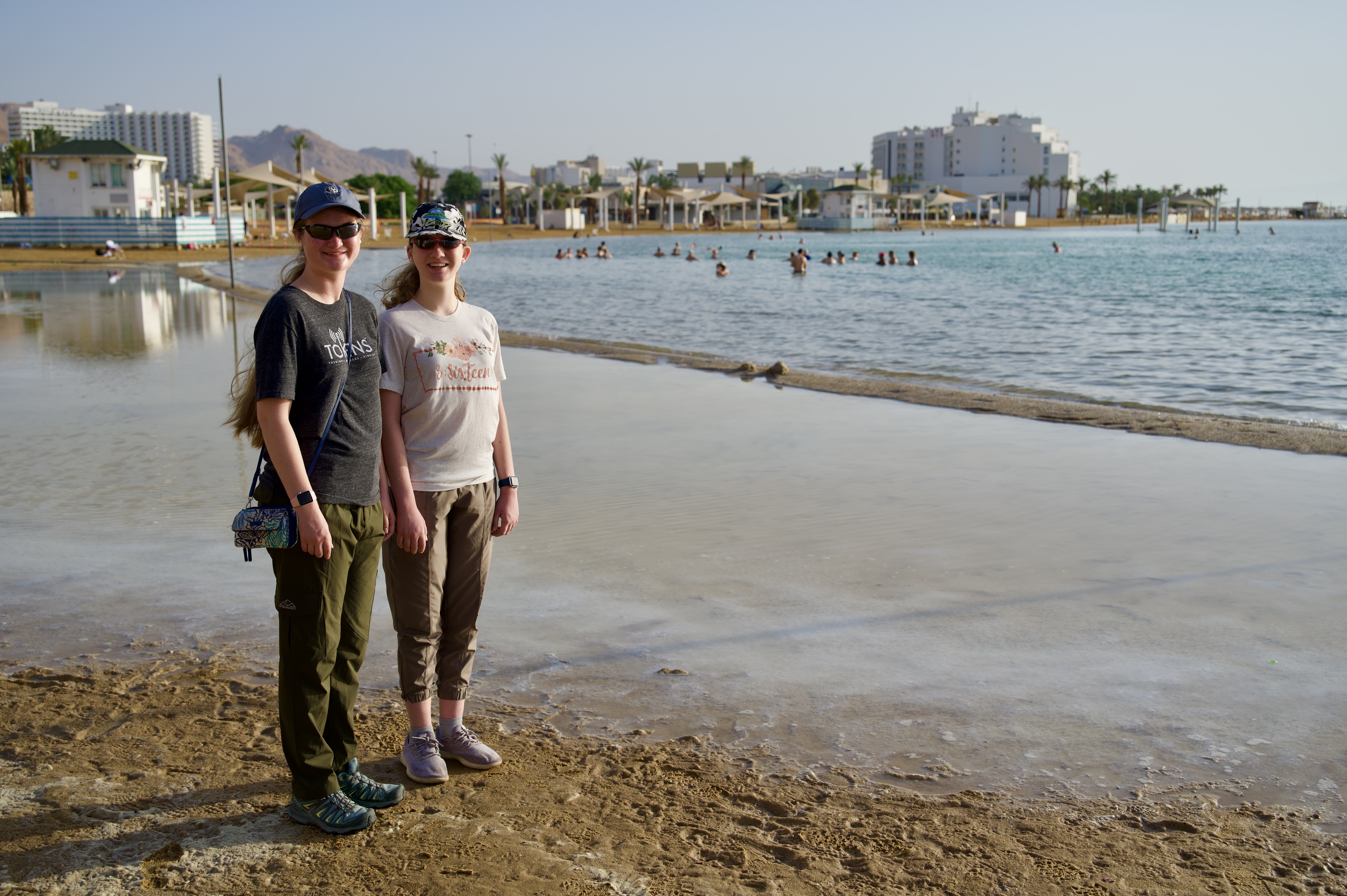
This morning Olivia and I both got up just before 6am. Our two rooms were right next to each other this time, so we let the girls be together last night. This was our only night in Ein Bokek, as we will be staying in Jerusalem for our final four nights.
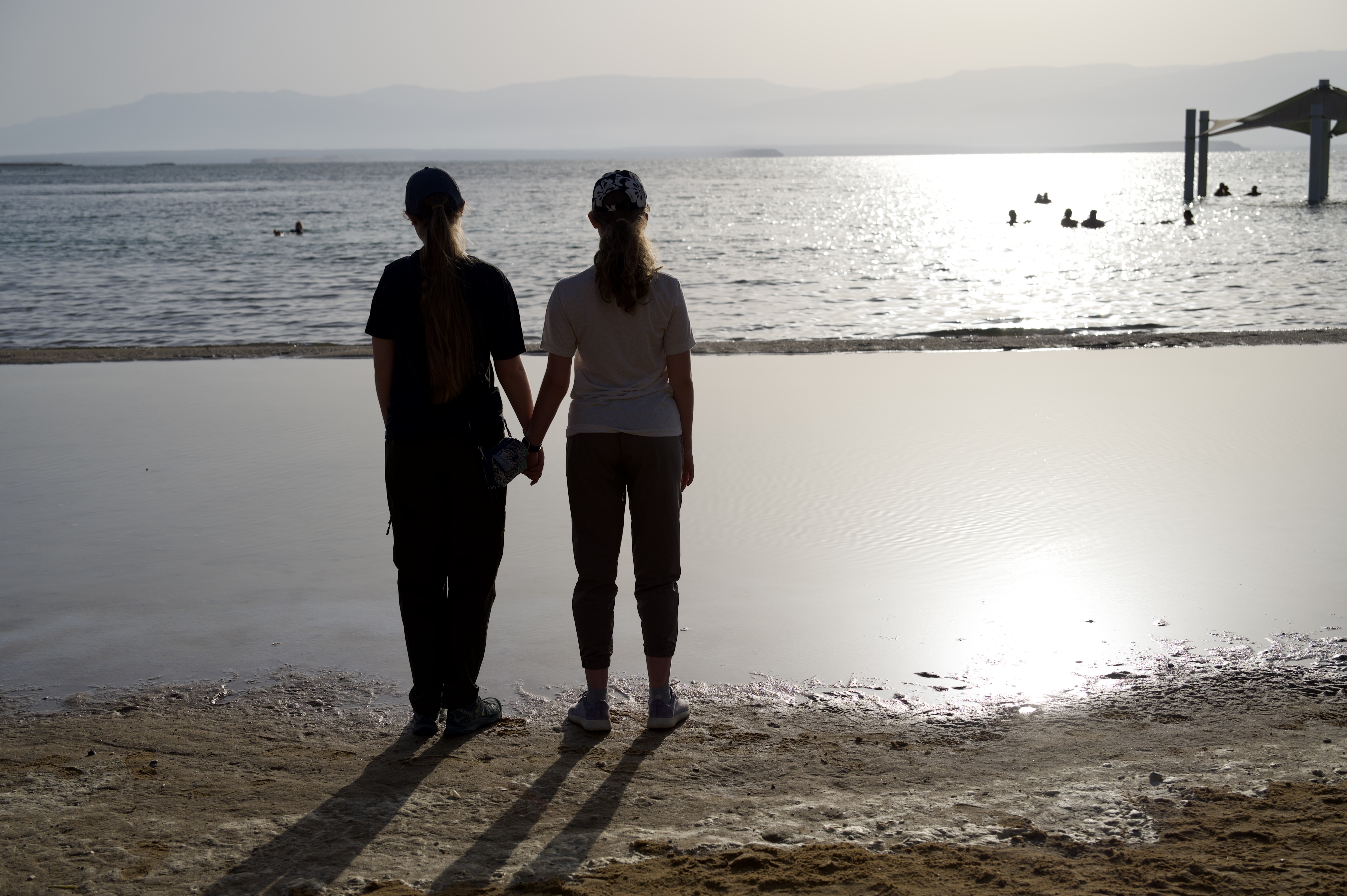
We met up with Kate and Sara around 6:45am and walked down to the Dead Sea to take a few pictures before heading back to breakfast. This breakfast was not as good as in Tiberius, but had a couple of really good cafe lattes, so all was not a loss. Our group loaded our bags and boarded the bus at 8:15am, and we headed off to Masada.
Masada
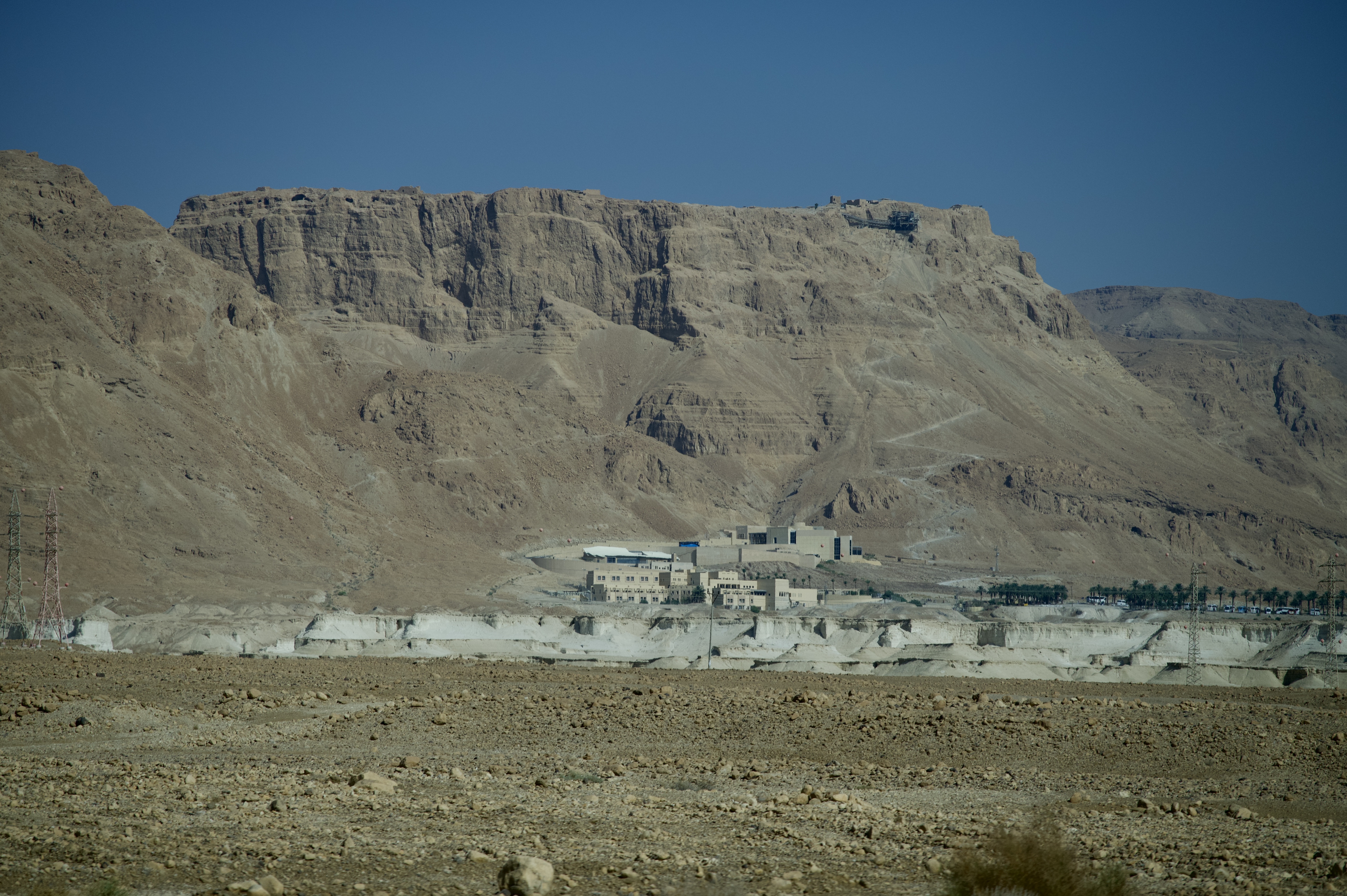
Masada is a mountain (mesa) that rises almost 1,500ft above the Dead Sea in the Judean Wilderness, but this is still just barely above sea level. The name Masada means “fortress.” Everything we know about Masada comes from Josephus and archaeological excavations. Herod the Great built two palaces on the mountain and fortified Masada between 37 and 31 BC. The palaces of Herod the Great were essentially abandoned by his sons after his death in 4 BC.
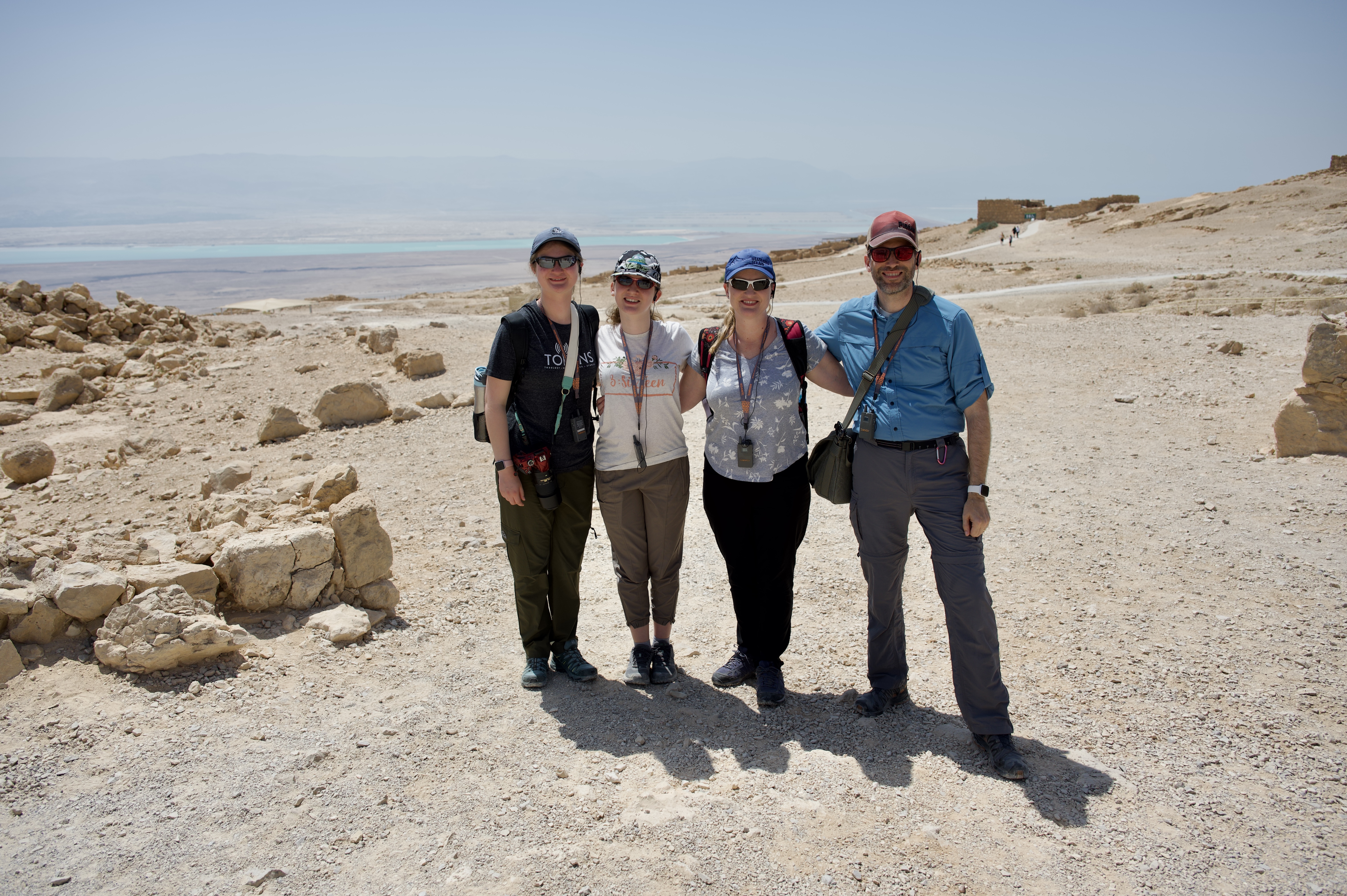
The site was taken over by the Jewish zealots (the Sicarii – knife-wielding zealots) and became the last stronghold of the Great Jewish Revolt (66 to 73 AD). The Romans brought 8,000 troops to Masada in 73 AD and defeated the Jews who were living there.
According to Josephus, the siege of Masada by Roman troops from 70 to 73 AD, at the end of the First Jewish–Roman War, ended in the mass suicide of the 960 Sicarii rebels who were hiding there. However, the archaeological evidence relevant to this event is ambiguous at best and rejected entirely by some scholars. According to Josephus, when it became clear that the Romans were going to take over Masada, on April 15, 73 A.D., on the instructions of Ben Yair (in the synagogue), all but two women and five children, who hid in the cisterns and later told their stories, took their own lives rather than live as Roman slaves. Today it is hard to believe that the women in the cisterns could have heard what was being said in the Synagogue, which was relatively far away (more on that below). Whatever the case, this story is a source of great Jewish pride today.
Upon arrival at Masada, we first watched a short movie that told the story of Josephus about the mass suicide as mentioned above. After the movie, Ami took us outside and we boarded a large cable car to ride to the top.
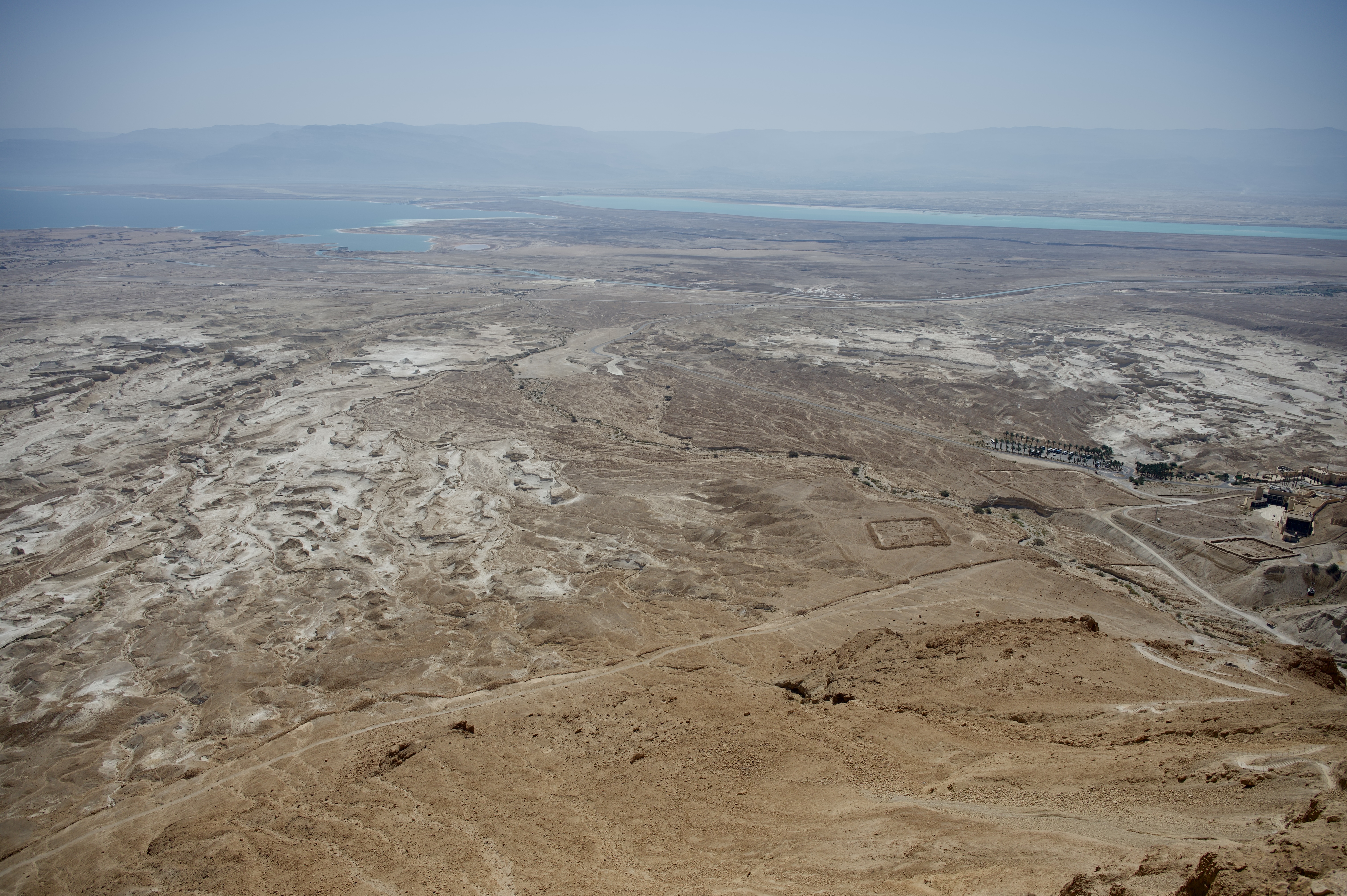
From the top, the views of the Wilderness of Judea and the Dead Sea below, are simply breathtaking. One thing I noticed is that it was not as hot as I feared. Thankfully we were visiting in the early morning because I imagine that it would have been unbearable in the mid-day heat.
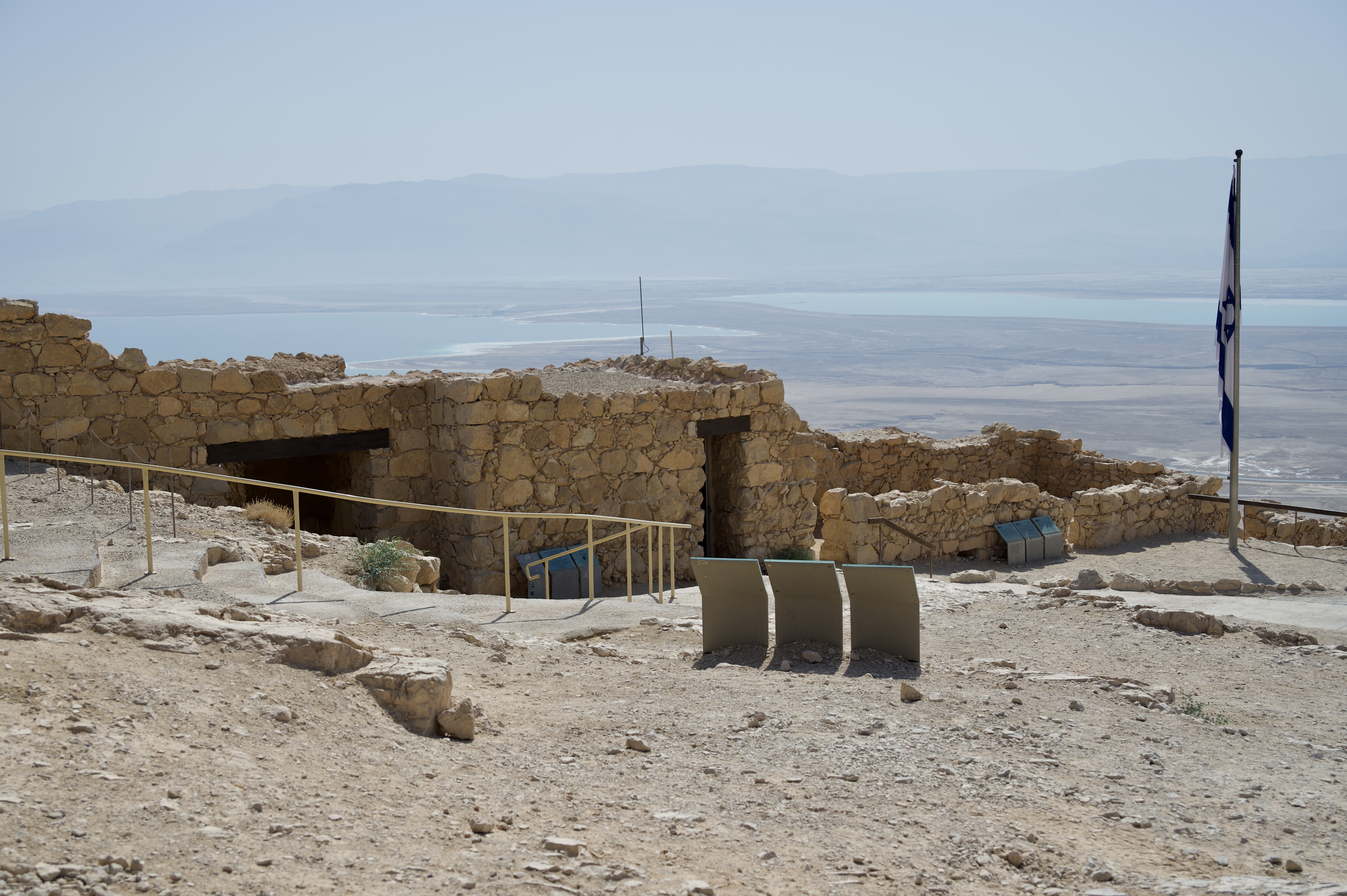
We entered Masada through the Snake Path Gate, which is from the time of Herod the Great. The Snake Path and Snake Path Gate were used to access Masada from the valley below. The Snake Path today is a hiking trail that provides access to the top of the mountain.

Inside the Snake Path Gate, Ami pointed out the plaster covering the stone.
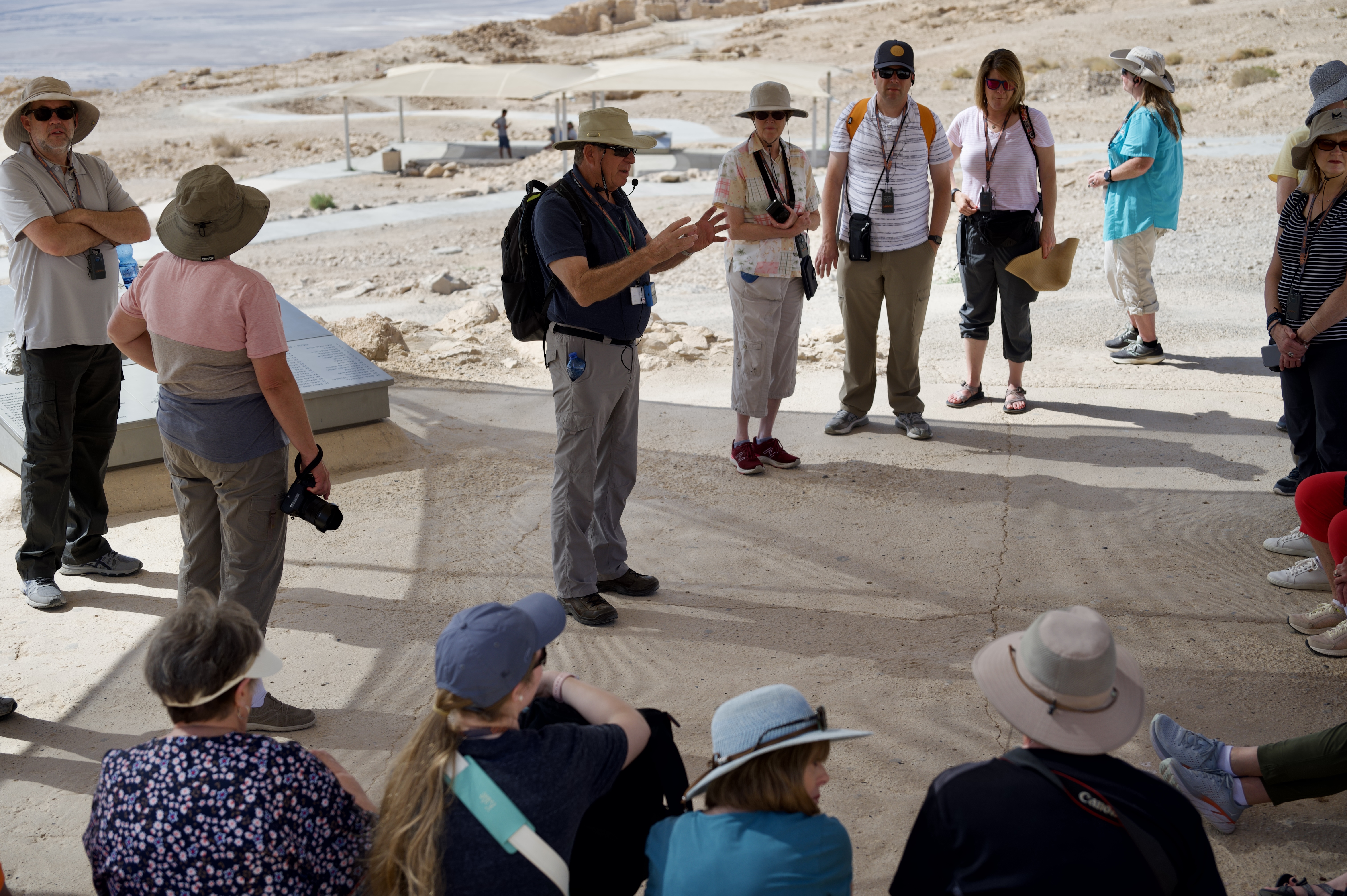
From there he took us to a shaded area to talk to us about the excavations at Masada. He also said that a common misconception is that Masada was destroyed by the Romans, but they simply conquered it. Masada was actually destroyed by earthquakes because of its proximity to a fault line.
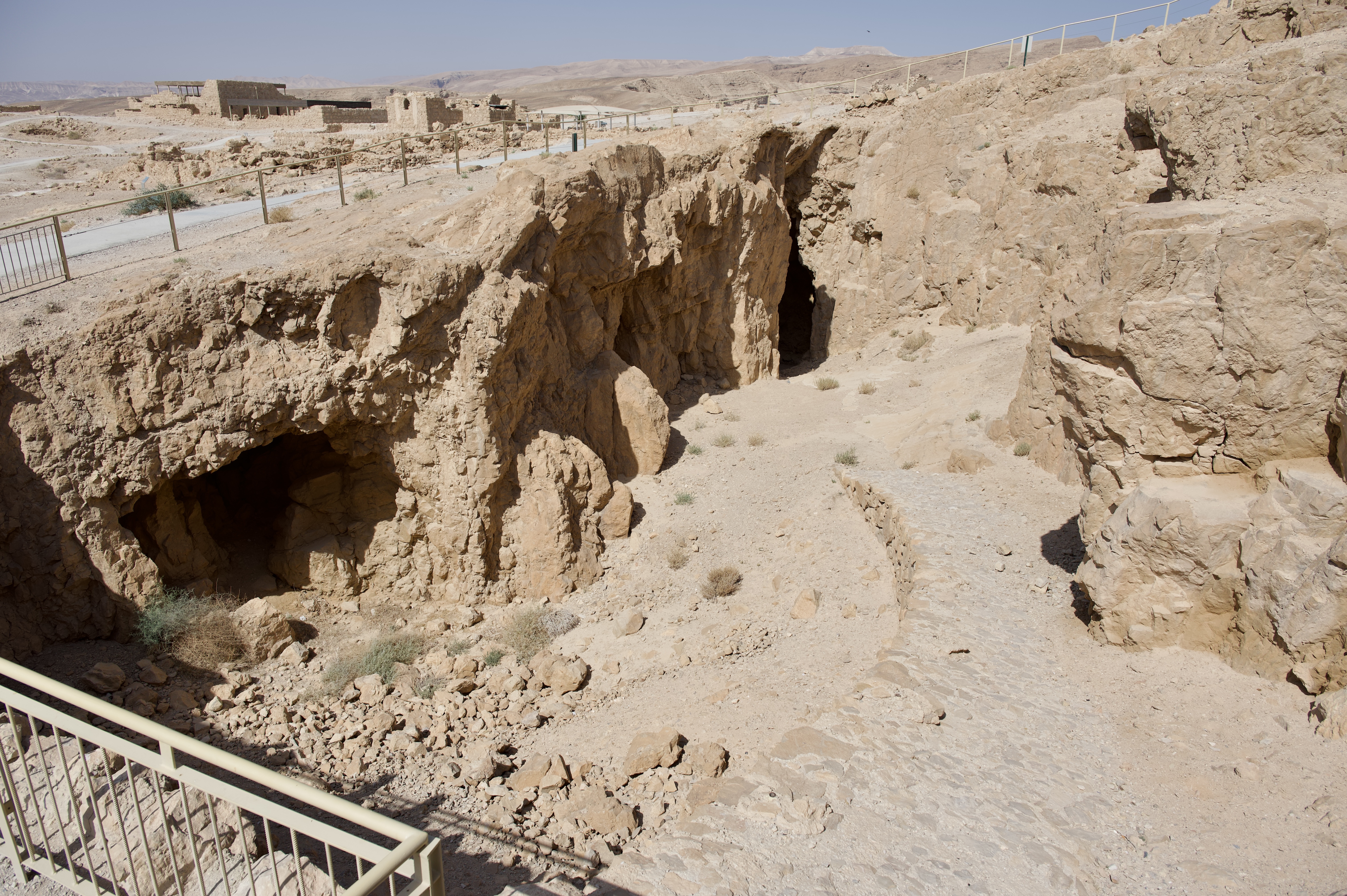
Next, he took us to a quarry from the time of Herod the Great that was used to mine the rocks needed for building the palaces and other structures. Unlike other Roman structures built by Herod the Great, no outside materials were brought in to build this fortress. This is likely because it is so isolated.
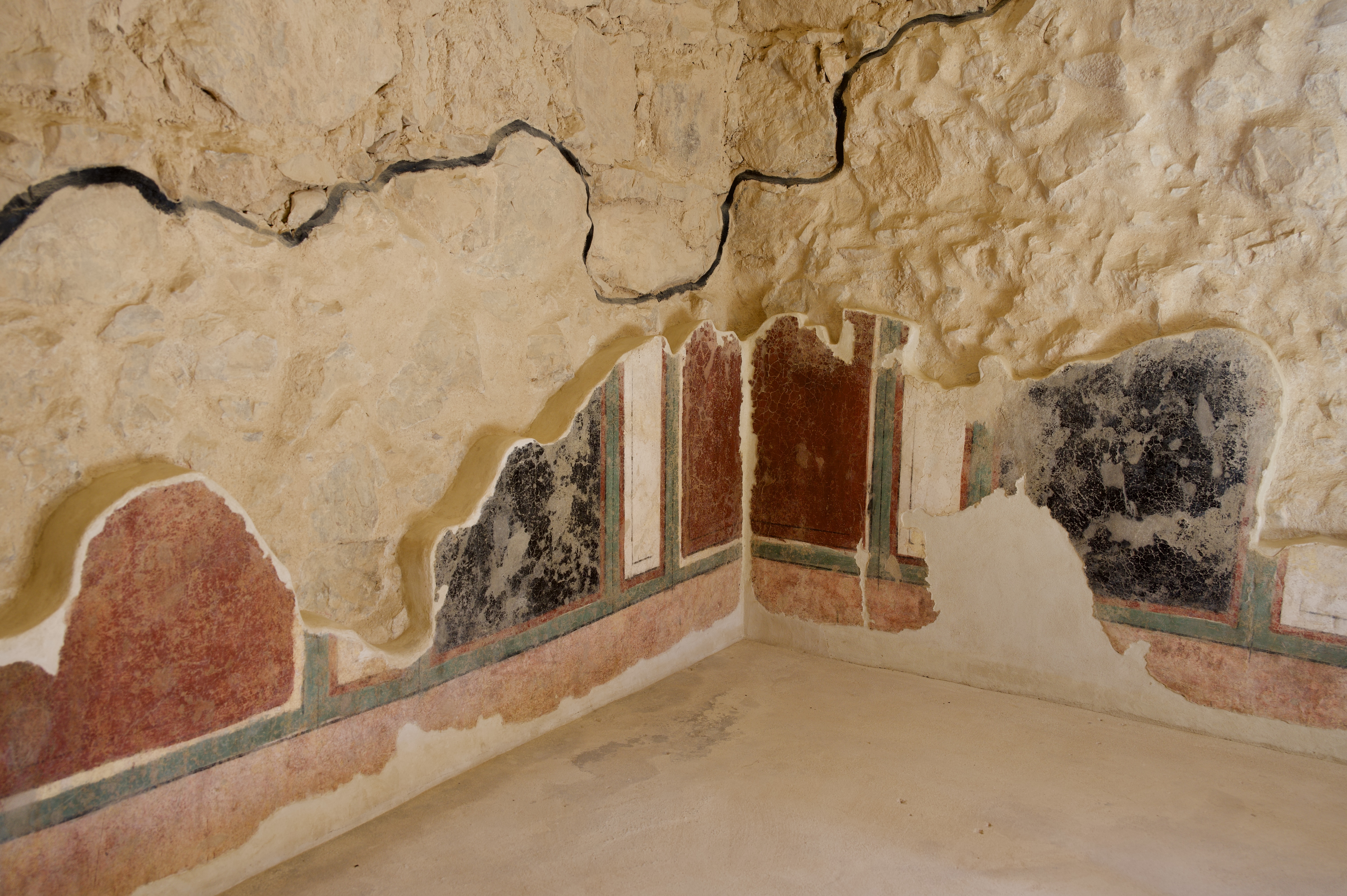
We saw the Commander’s House, and again Ami pointed out the plaster covering the rock walls.
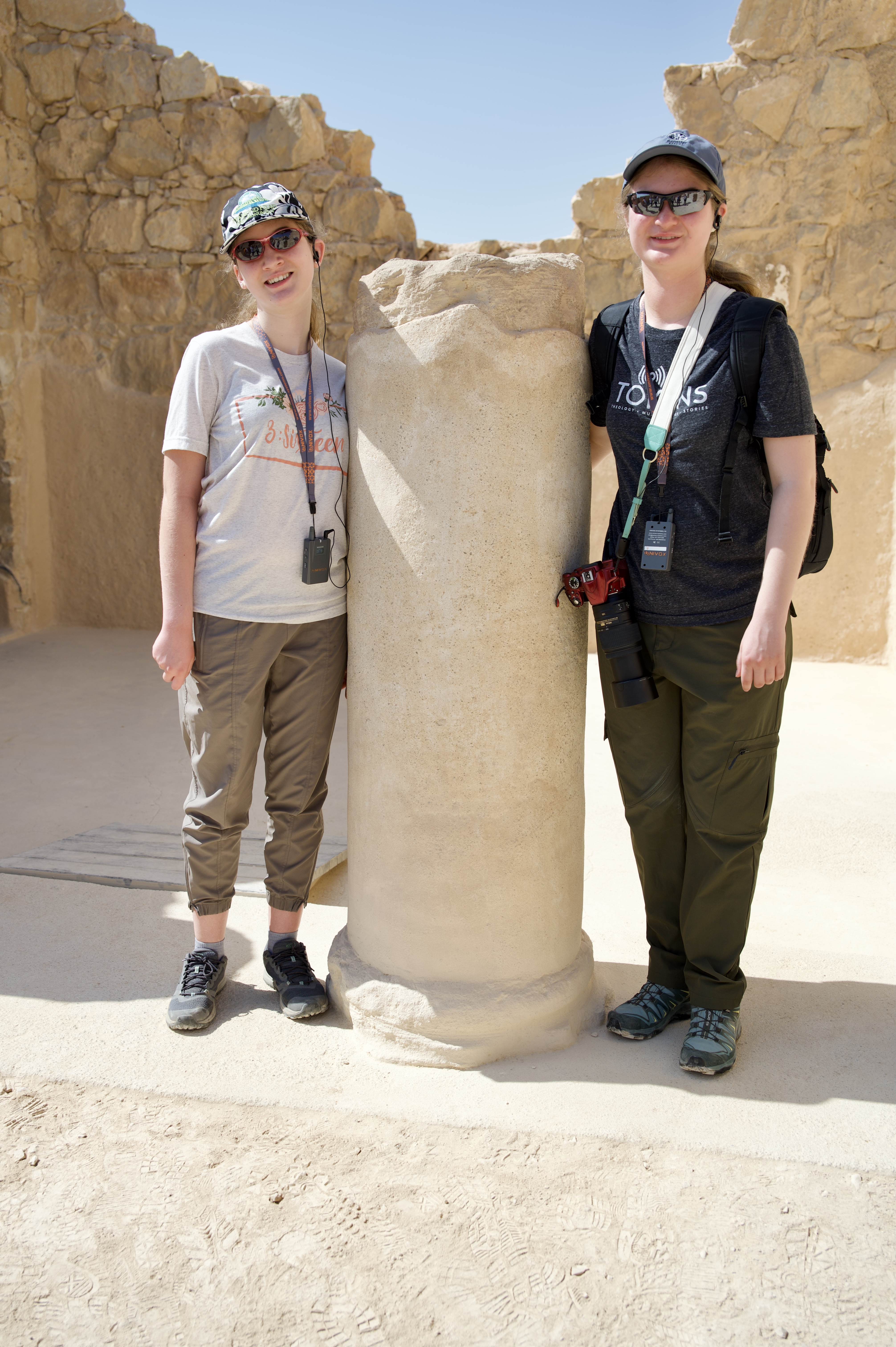
He also explained to us how columns were made with multiple circular rocks stacked like pancakes, but then covered in plaster to make it look like it was one piece. He also told us that some of the excavations have found Hebrew inscriptions in the stones, which likely means that Herod used Jewish slaves to build Masada.
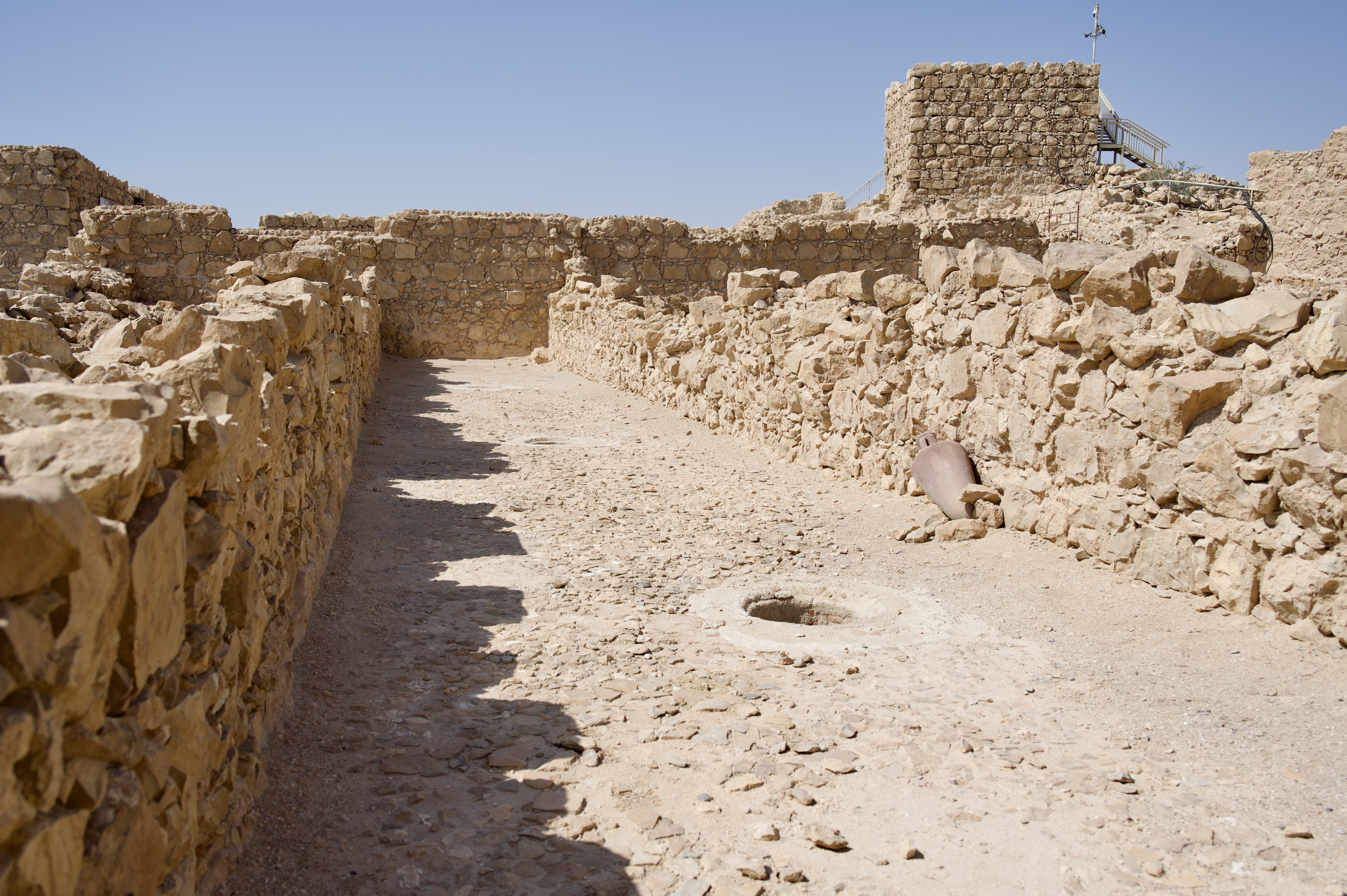
From there we entered the Northern Palace Complex and were able to see some of the storehouses used for olive oil, wine, and grain. I had previously been told that the holes in the bottom of the storehouses were for wheat and barley, but today Ami said that they were used to catch any spilled olive oil. Guess this is a topic that requires further research.
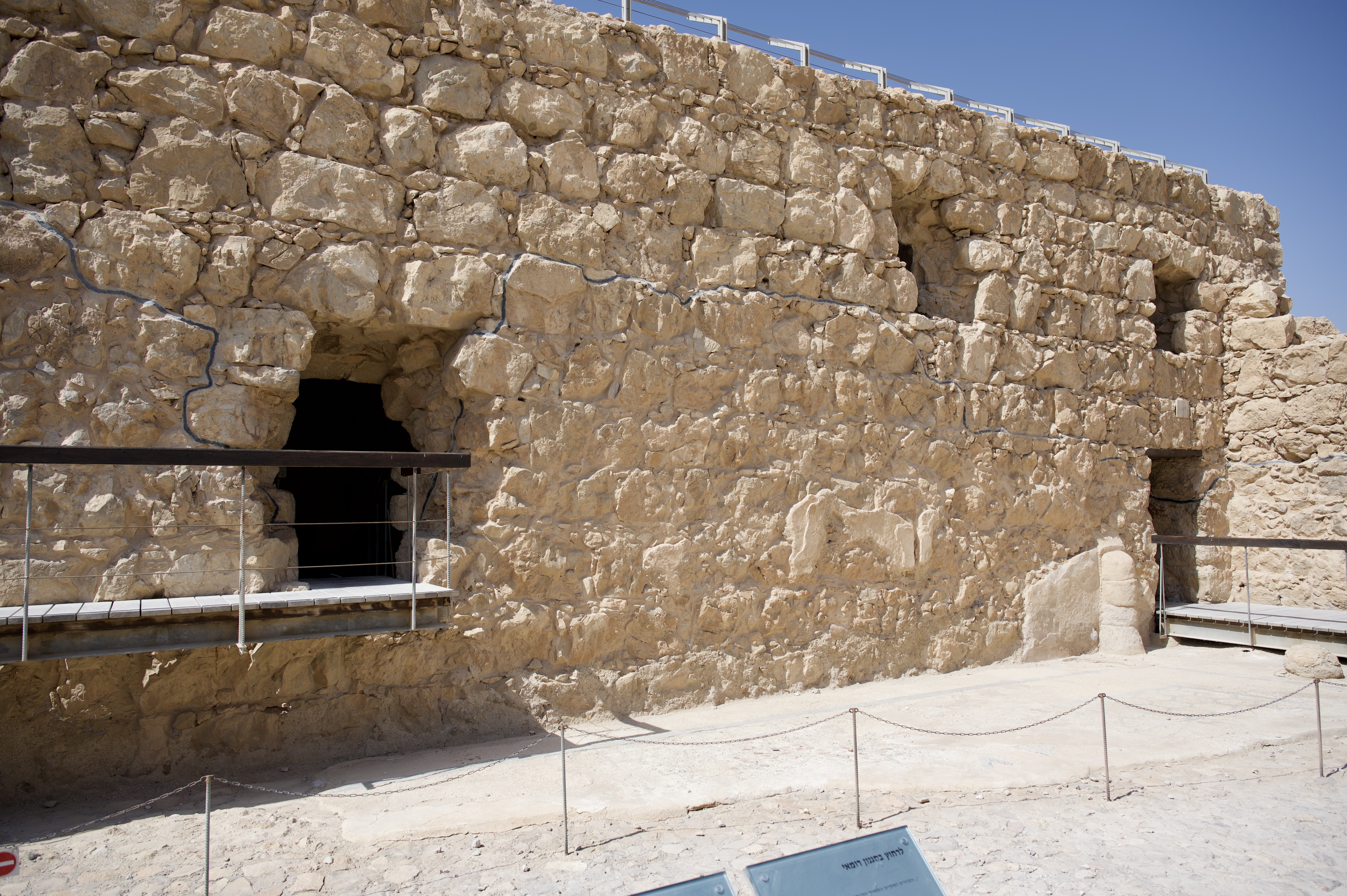
Our next stop was a bath house with the same 3 types of rooms from the bath house in Bet-She’an: (1) Cold room (2) Cool room (3) Hot room or sauna.

In the Sauna, the floor was raised by a series of short pillars. Fires were set through arches under the floor by the servants. Hot air was run under the floor and up the walls to make the surface hot and then cold water was poured on the walls and floor to make steam. The more I tour these type of bath houses, and even seeing this specific site again, the better I understand how they worked.

Inside the bathhouse, Ami pointed out a mikvah that had been added by the Byzantine Christians who took over the site in the 5th century AD.
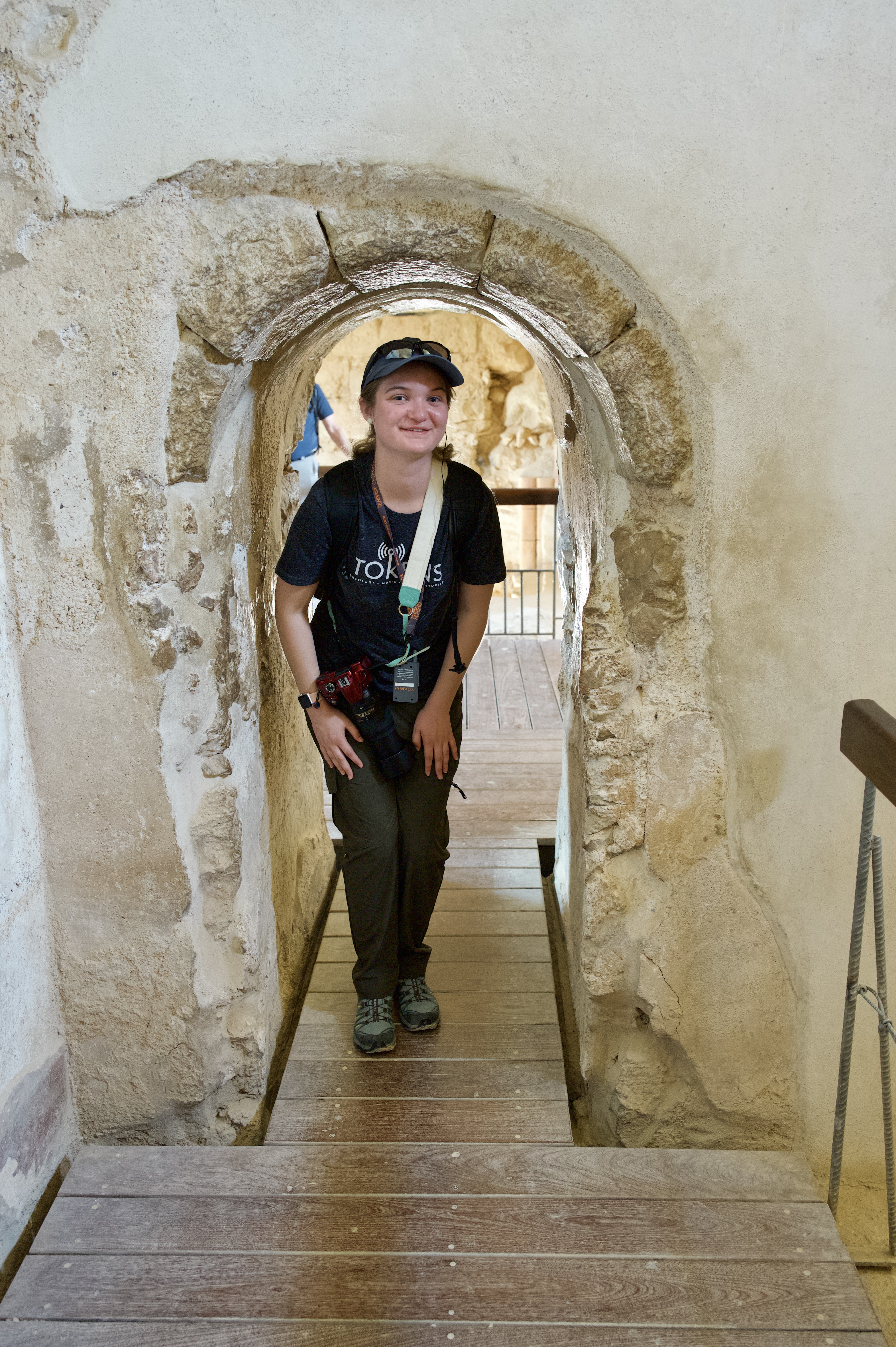
One of my favorite parts of this bathhouse is the very short door just before the steam room. I wonder if this means that Herod was short, or if the builder was short.
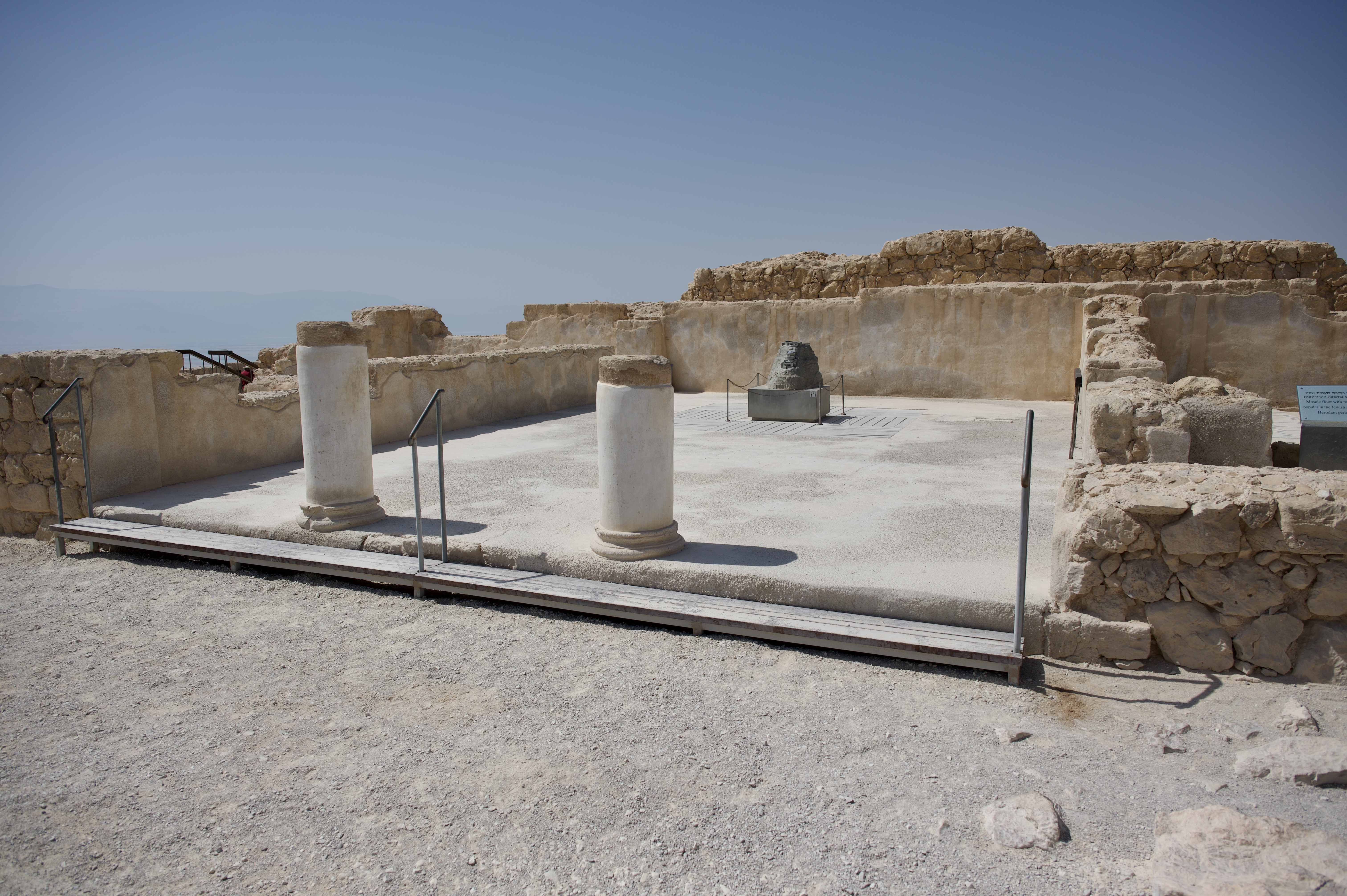
Our last stop in the Norther Complex, was the three-tiered Palace that was built into the side of the mountain. It is incredible that they were able to build something like this over 2,000 years ago.
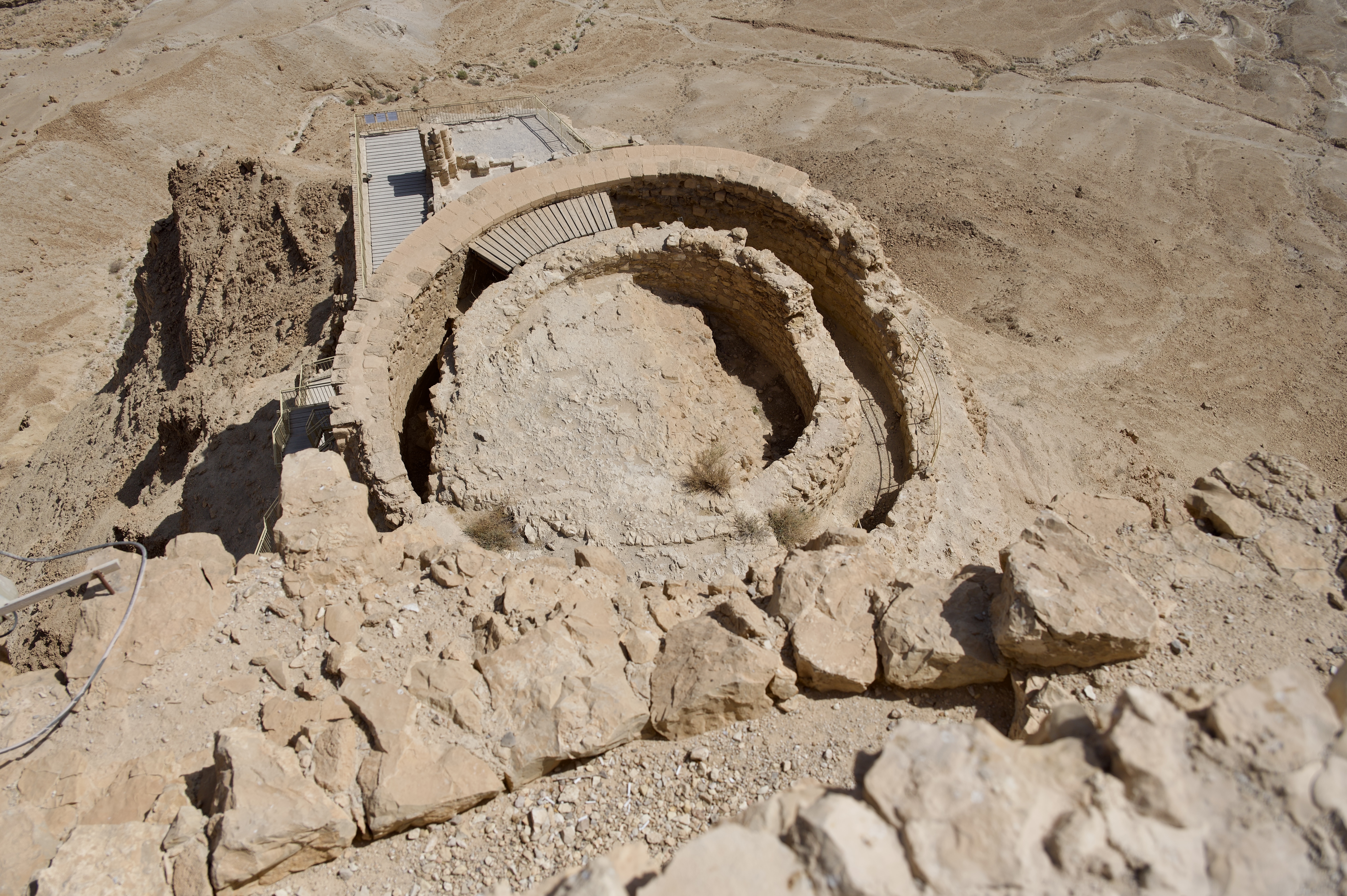
Ami told us that this palace was mentioned by Josephus but not understood until the archaeological excavations began. Ami explained that this location was likely chosen because there is a consistent breeze on that corner of the mesa.

While up in this area, Ami talked to us a little about Herod the Great. He was a Roman ruler that liked to play both sides. He built up the city of Jerusalem and took a Jewish wife, but both were likely political maneuvers. He eventually killed his Jewish wife as he got older, and this was one of the reasons why it was said that “it was better to be his dog than a member of his family.” Ami also said that no one knows whether ever came to Masada. It was likely built to be an escape refuge.

Down below the palace, on the desert floor, Ami pointed out the squares where they have excavated the Roman encampments from when they brought 8,000 troops against Masada, and laid siege for three years. These 8,000 soldiers were from the 10th legion and were spread out over 8 camps.
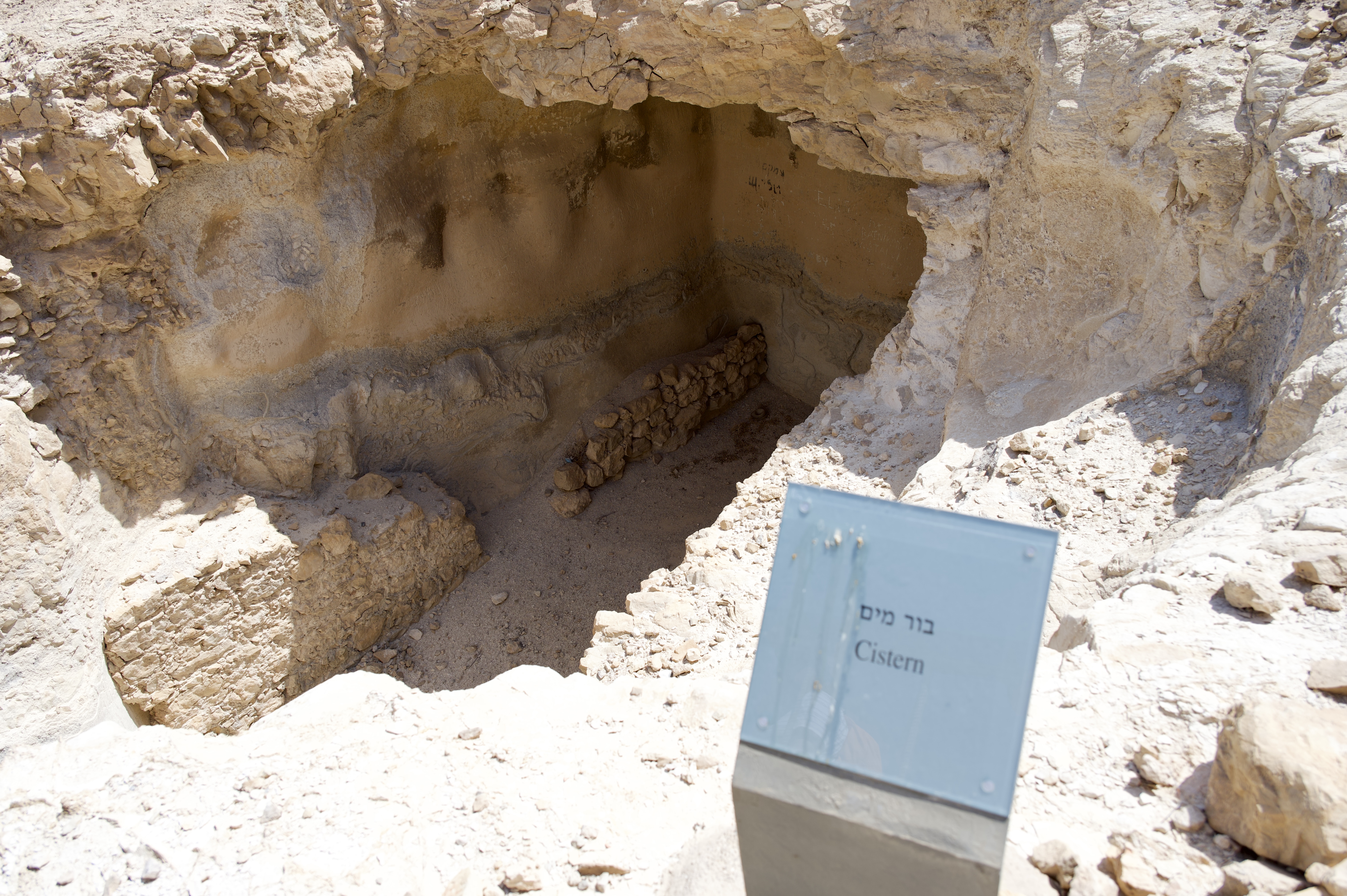
Next, we saw one of the cisterns from the fortress before Ami explained the intricate water system to us. There were channels cut into the Mesa that collected rainwater and automatically filled cisterns throughout the fortress.

Later, as we were leaving, we were able to see one of these channels (aqueducts) up close.
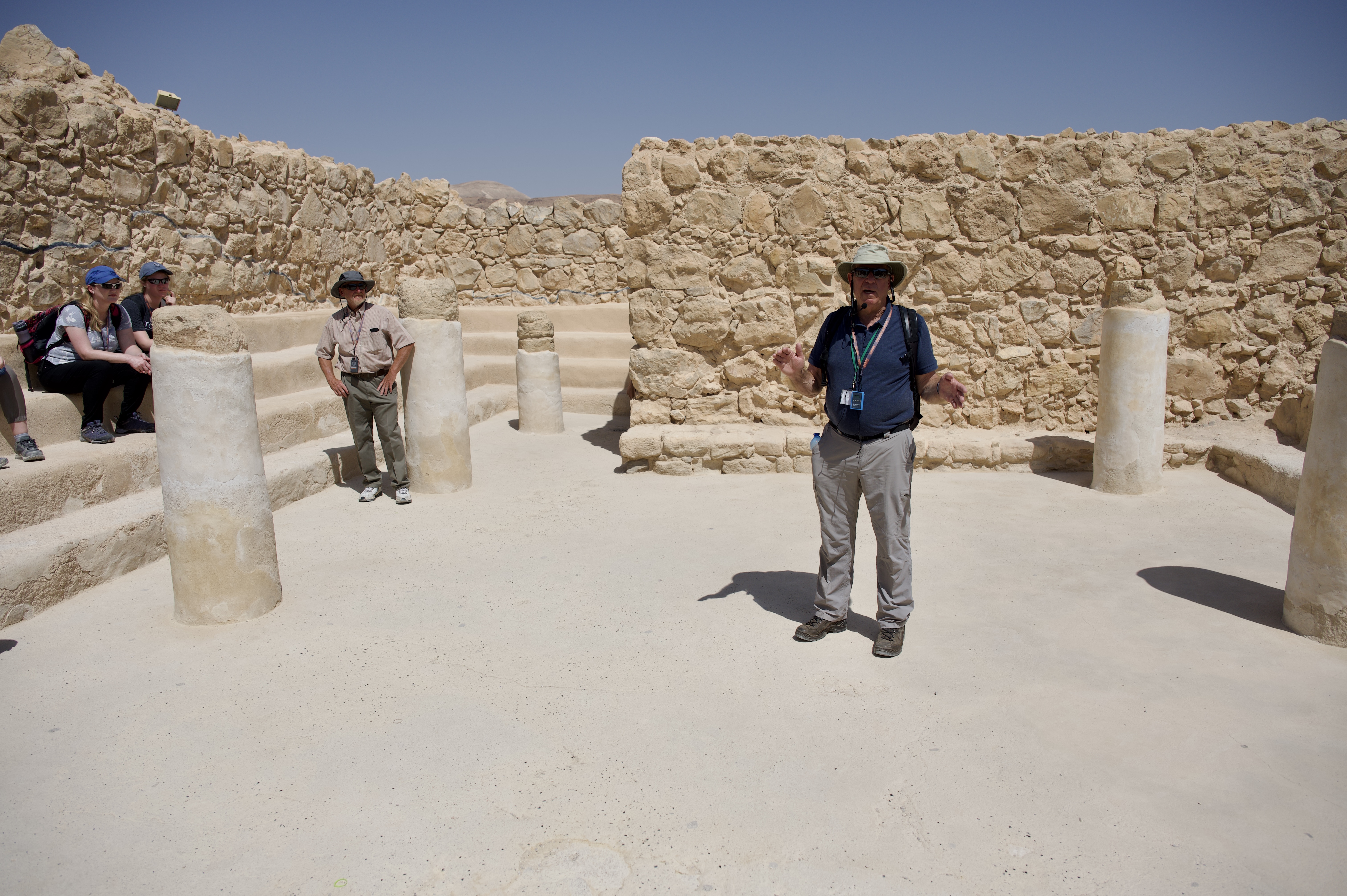
We then went to the synagogue from the time of the Jewish control of Masada. Josephus records that a speech was made at this synagogue by Eleazar ben Ya’ir during the Roman attack in 73 AD, and that 10 men were chosen to kill all the remaining Jews to prevent their capture (cast “Lots”). While Josephus is known for his accurate accounts of Jewish history, it seems almost impossible for him to know this. While many today still hold to the traditional view of what happened at Masada, some modern scholars believe that Josephus adapted a story from his past when he was a Jewish commander, and that this “suicide” was a myth given to strengthen the state of Israel. My personal view is that all the Jews at Masada likely died at the hands of the Romans. I mention the traditional view above about the women and children hiding in a cistern and hearing Eleazar ben Ya’ir. From there they supposedly went and told Josephus. We don’t know which cistern it was, but as Ami was speaking, I walked over to the closest cistern, and took off my headset. Not only could I not understand what he was saying, I couldn’t even tell he was talking. This doesn’t definitively prove anything, but just makes me even more wary of the traditional story. However, ultimately no one really knows what happened at Masada.

As Ami lead us out of the synagogue, we came to a section of the outer casement wall from the time of Herod the Great known as the “Casement of the Scrolls.” It was given this name because two of the Dead Sea Scrolls were found there. One of these two scrolls contained the passage from Ezekiel about the vision of the valley of the dry bones (Ezekiel 37).
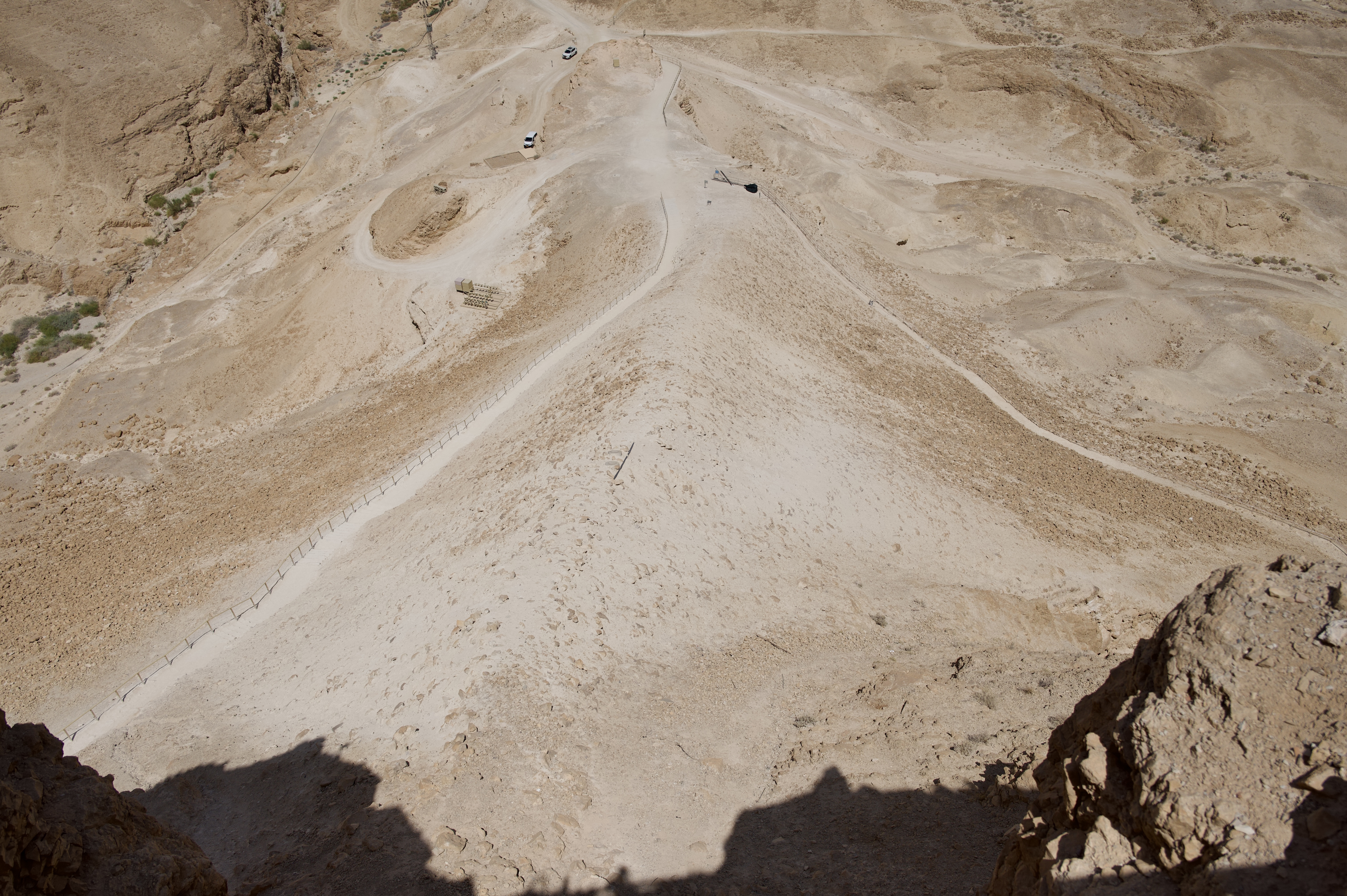
Our final stop was to see the point where the Romans built a ramp and breached the casement wall during the attack in 73 AD.
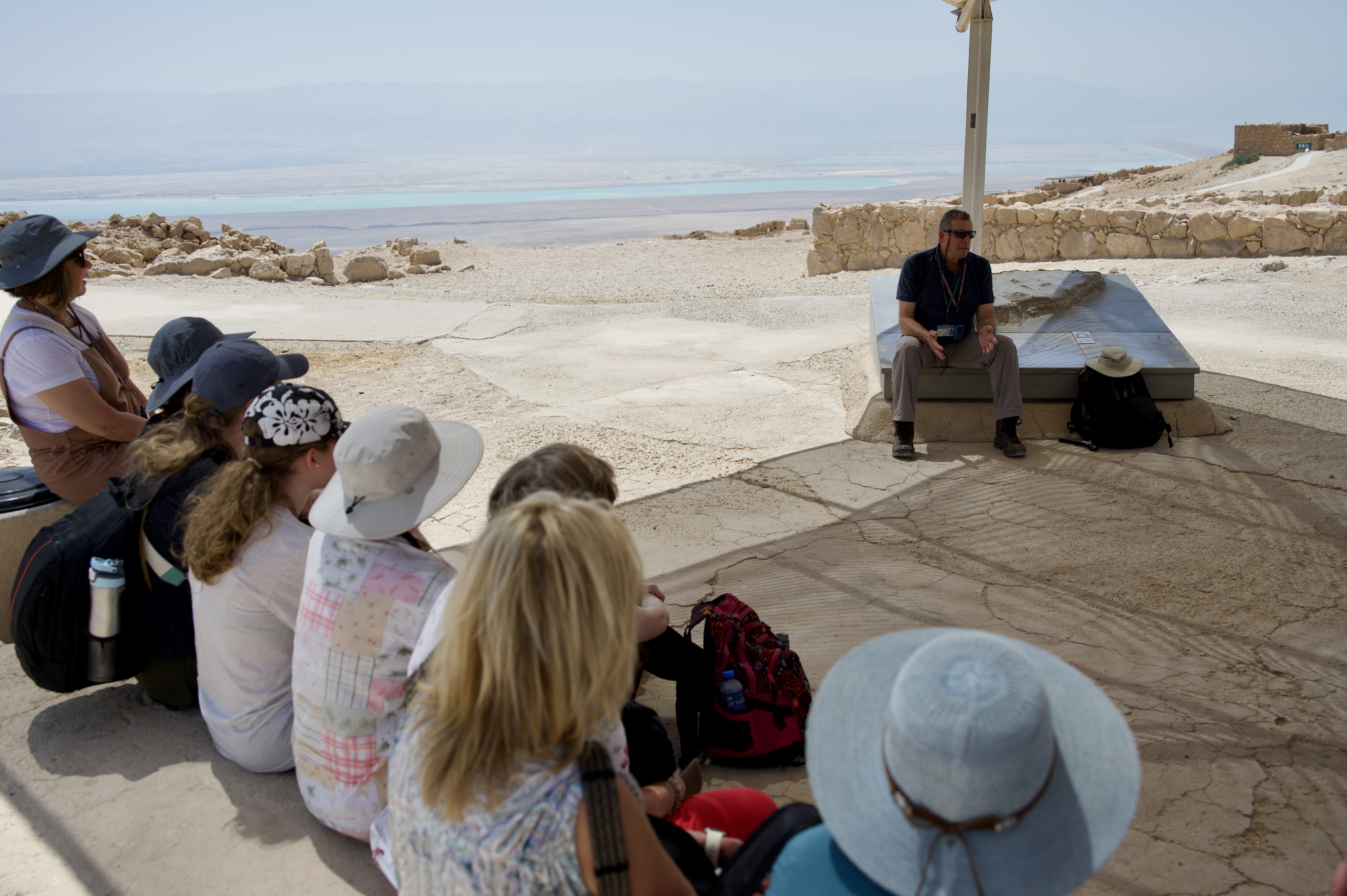
Before heading back to the cable car, Ami took us to another shaded area and told us a version of the traditional suicide story with a few differences that were interesting. He then told us about his service in the Israeli Army and his soldier ceremony at Masada. He said that after every soldier completes basic training, they are brought to Masada and given a Bible. The idea is that everyone must serve to protect Israel in the hope that the Jews will never have to do what was done at Masada again. Today they have a powerful army, and they will protect themselves. Even though I don’t necessarily believe the traditional story, this is an awesome ceremony.

After a cable car ride down to the visitor center, we boarded the bus and headed back to the Dead Sea resort area. From there we turned and headed out across the Judea Mountains into the north end of the Negev Desert toward Tel Be’er Sheva. We stopped briefly at an observation point where you can clearly see the pools formed by the barrier walls in the resort area of the Dead Sea. This is to help maintain the water level with the water being channeled from the north to the south.
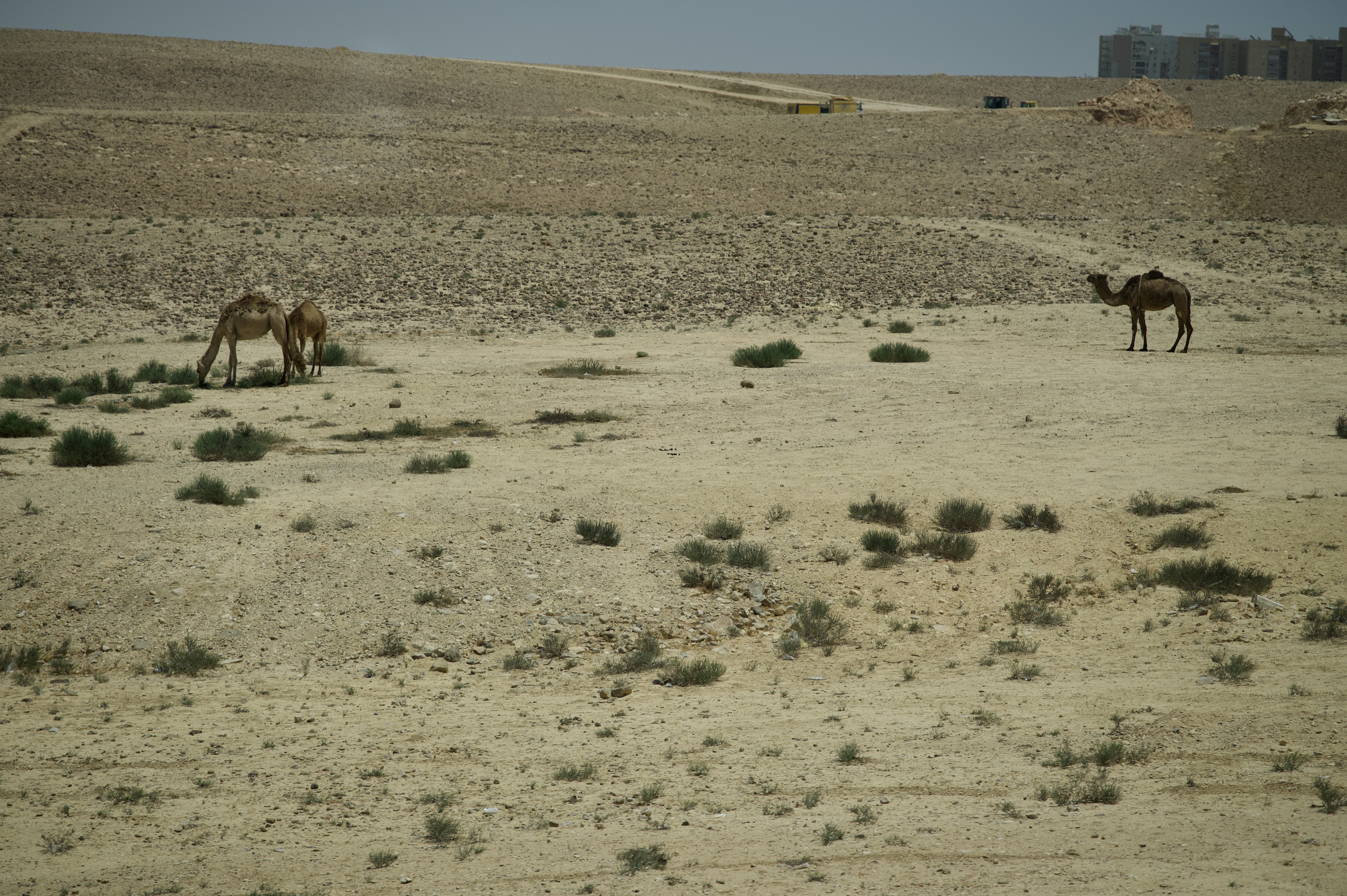
Along the way we passed many Bedouin villages and even saw several camels.
Tel Be’er Sheva / Be’er Sheba
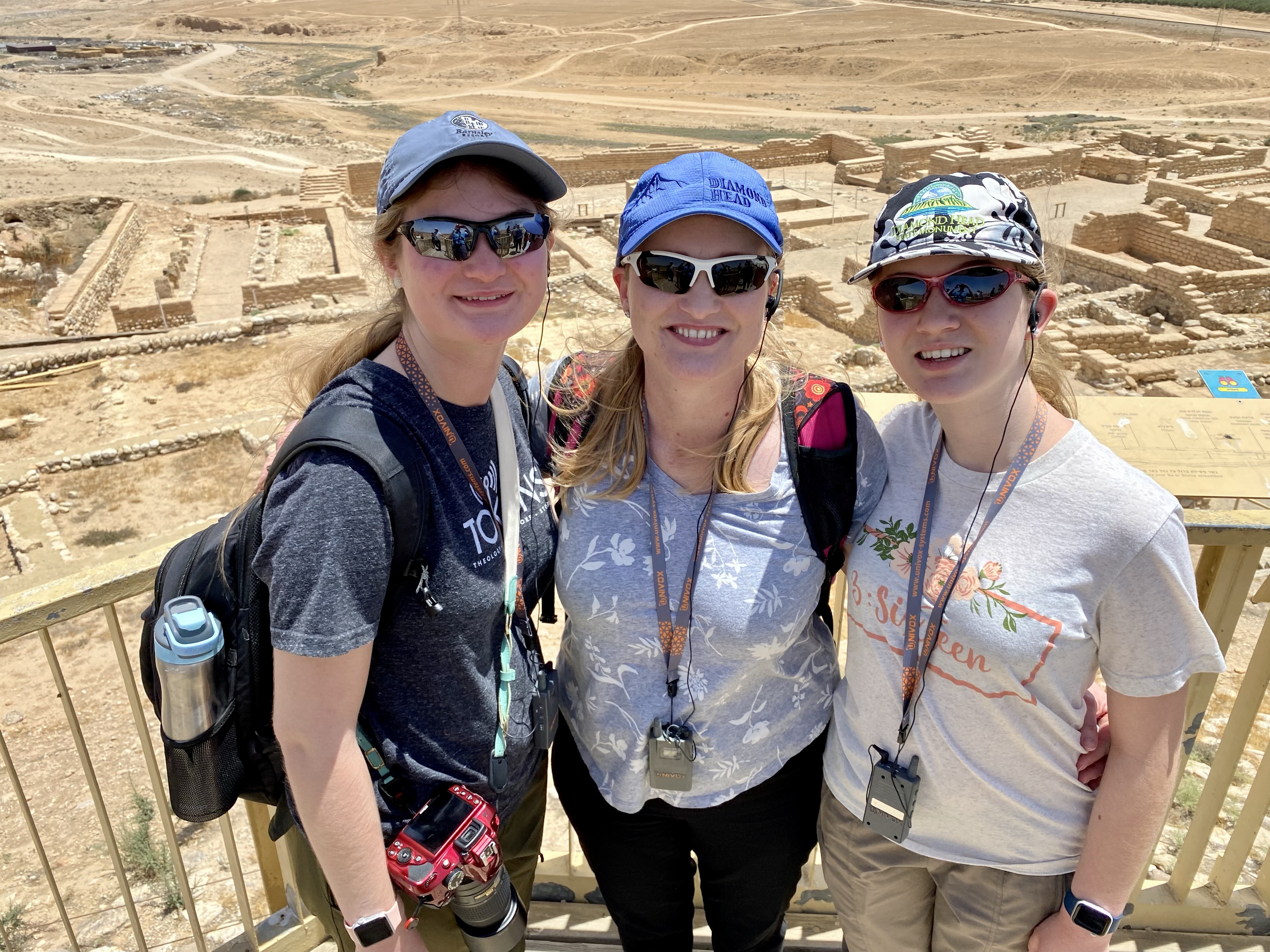
It was much cooler at Tel Be’er Sheva since we were at a much higher elevation. Tel Be’er Sheva lies east of the modern city of Be’er Sheba and west of the new Bedouin town of Tel Sheva. 15 strata have been discovered at this Tell, but most of what has been excavated, and is visible, is from the Israelite period. The name of this ancient city is derived from “be’er,” meaning “well or fountain” and “sheva,” meaning “oath.”
Be’er Sheva (or Beer-sheba) is mentioned 33 times in the Bible. “From Dan to Beersheba” is a biblical phrase used nine times to refer to the settled areas of the Tribes of Israel between Dan in the North and Beersheba in the South (Judges 20:1; 1 Samuel 3:20; 2 Samuel 3:10, 17:11, 24:2, 15; 1 Kings 4:25; 1 Chronicles 21:2; 2 Chronicles 30:5).
It was a significant center in the patriarchal narratives:
- Abraham dwelt at Beer-sheba (Genesis 22:19)
- Abraham and Abimelech entered a covenant at Beer-sheba (Genesis 21:32)
- Abraham planted a tamarisk tree at Beer-sheba (Genesis 21:33).
- The Lord spoke to both Isaac and Jacob, Abraham’s son and grandson respectively, at Beer-sheba (Genesis 26:23; 46:1).
Beer-sheba is the site of two significant wells from scripture: Abraham’s well at Beer-sheba was seized by Abimelech’s men (Genesis 21:25), and Isaac’s servants dug a well at Beer-sheba also (Genesis 26:25).
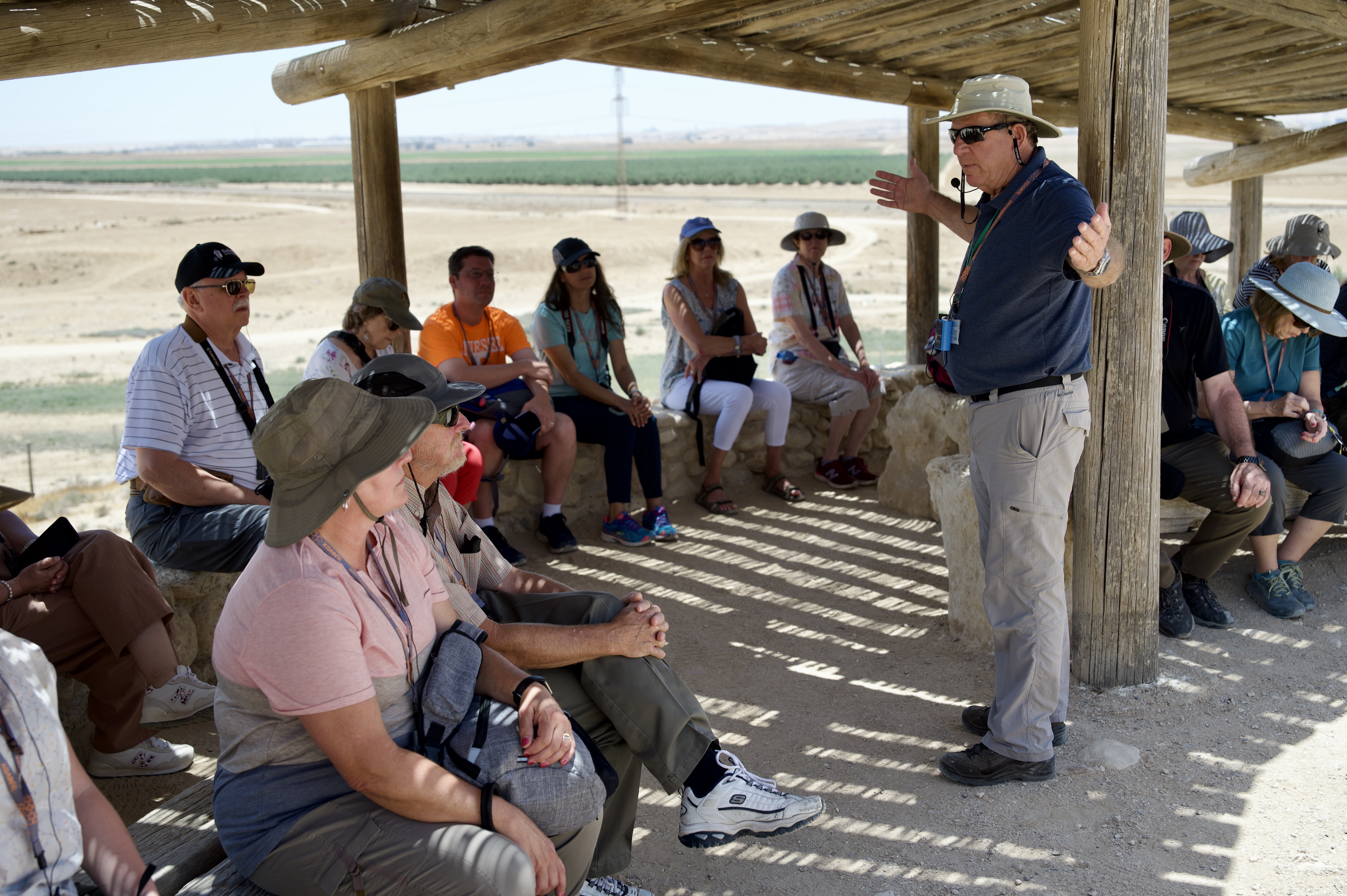
Once we arrived at the Tel, Ami led us to the top and then talked to the group about the site. He read to us from Genesis 21, and the account of Abraham and Abimelech and their oath or covenant. Next Daniel read from Genesis 46 where God had promised Jacob at Beersheba that he would make him a great nation in Egypt and then bring them back to the promised land.

Ami showed us 70-meter deep well outside the wall that could possibly either be the well of Abraham that is described in Gen 21 or the well of Isaac as described in Gen 26.
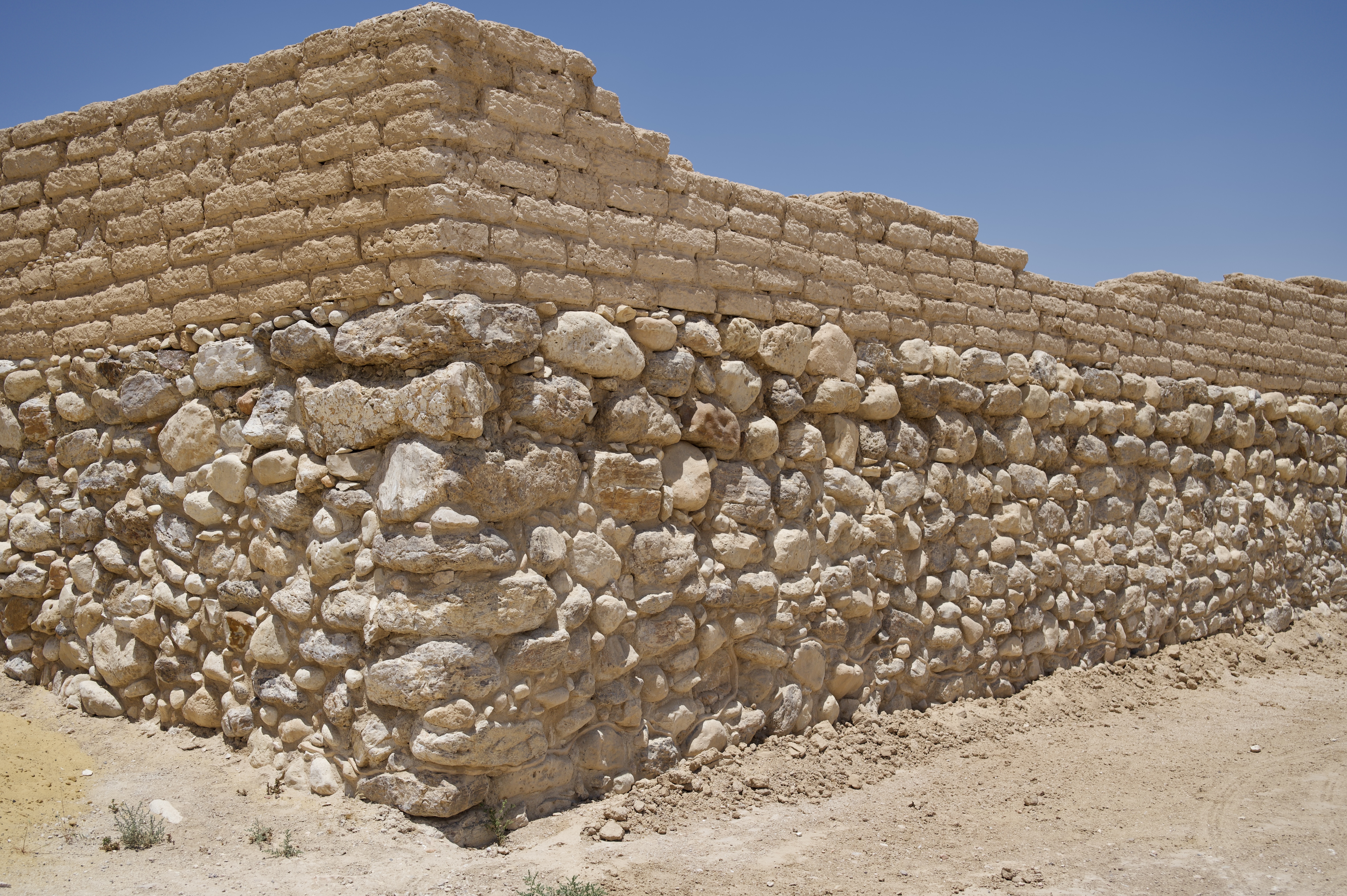
We also saw the remains of the city wall (most of this has been reconstructed / note the tan line near the ground). From there he led us into the city and showed us around the site.
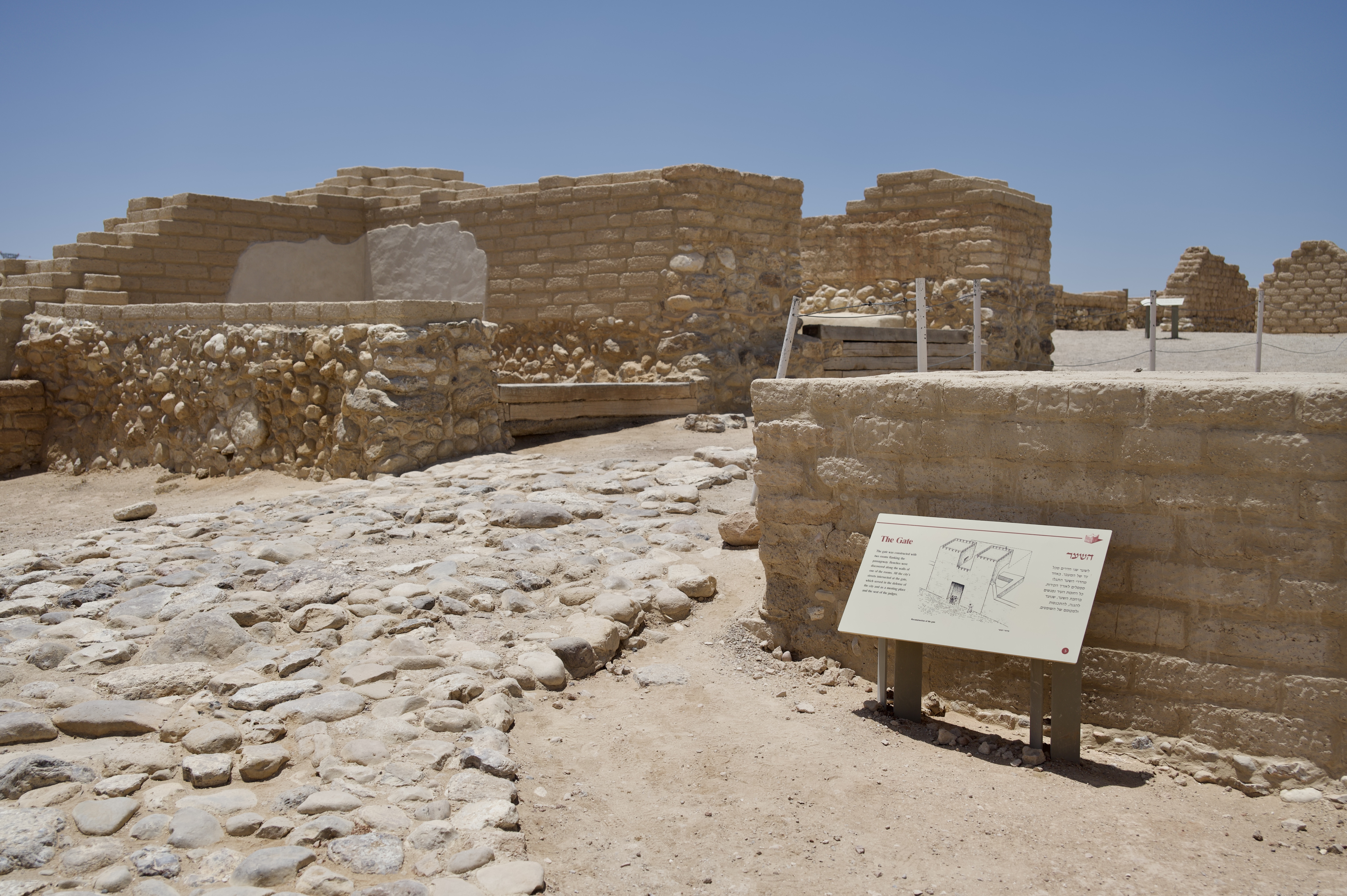
We saw the city gate (again, much has been reconstructed)

A 4-room house…

The modern city of Beer-Sheba…
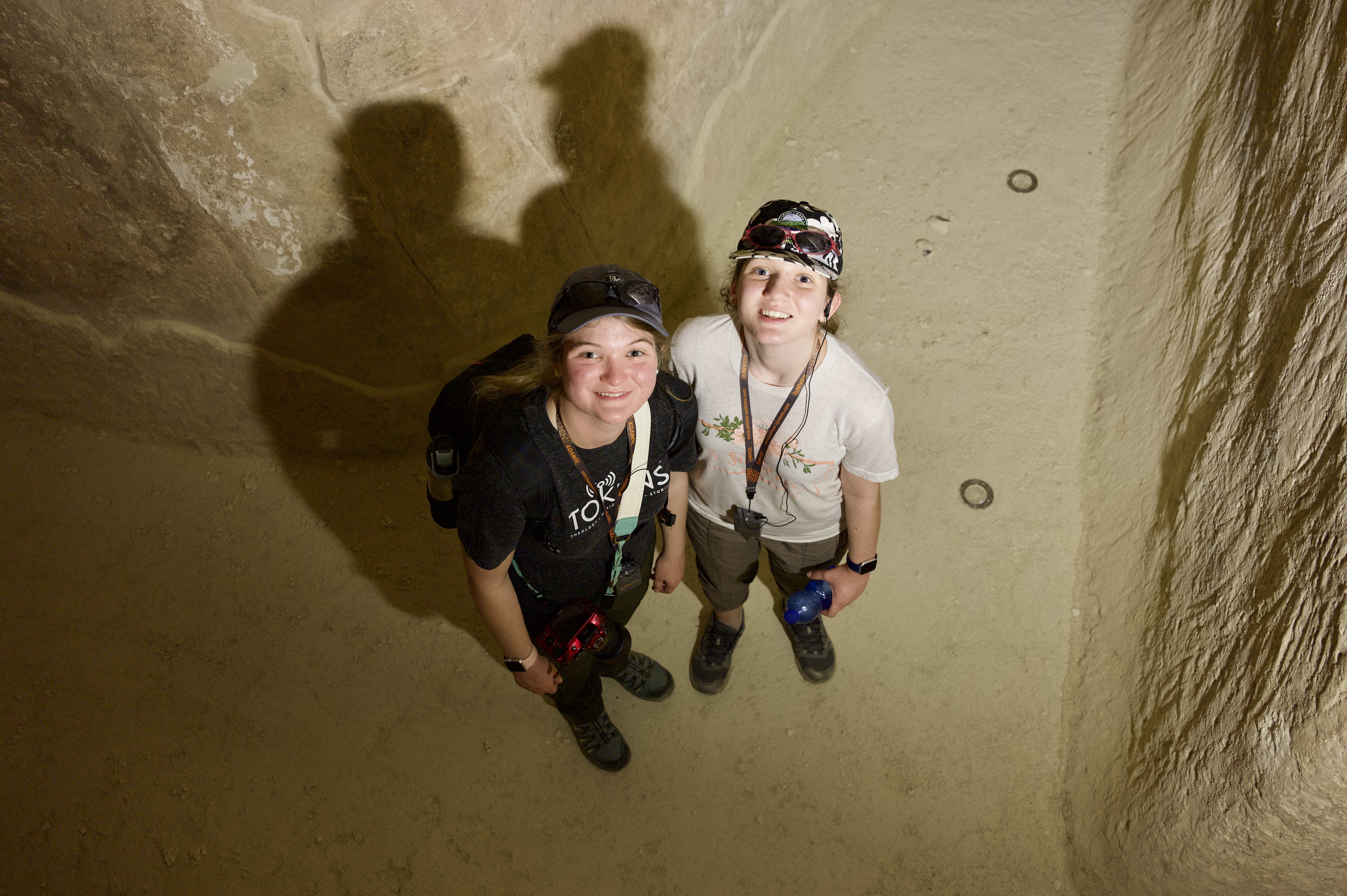
Finally, we were able to go into the water system at Tel Be’er Sheva. Normally this is entered from on top of the Tel, but today we had to go in through the exit at the bottom. This water system was designed to bring in water from the Hebron Mountains via wadi and channels into cisterns deep inside the Tel.

Olivia was very brave and went through these tunnels with us. She is extremely claustrophobic but did well.

On the way to our next site, we stopped and had lunch at a place that served coffee, salads, and sandwiches. I have no idea what the name of it was because it was all in Hebrew. Ordering was a bit of an adventure, but the food was good, and my cappuccino was excellent.

As we continued north, we took a wrong turn and ended up in the West Bank. The bus had to turn around and go back through the checkpoint, at which point an armed soldier boarded the bus for inspection.
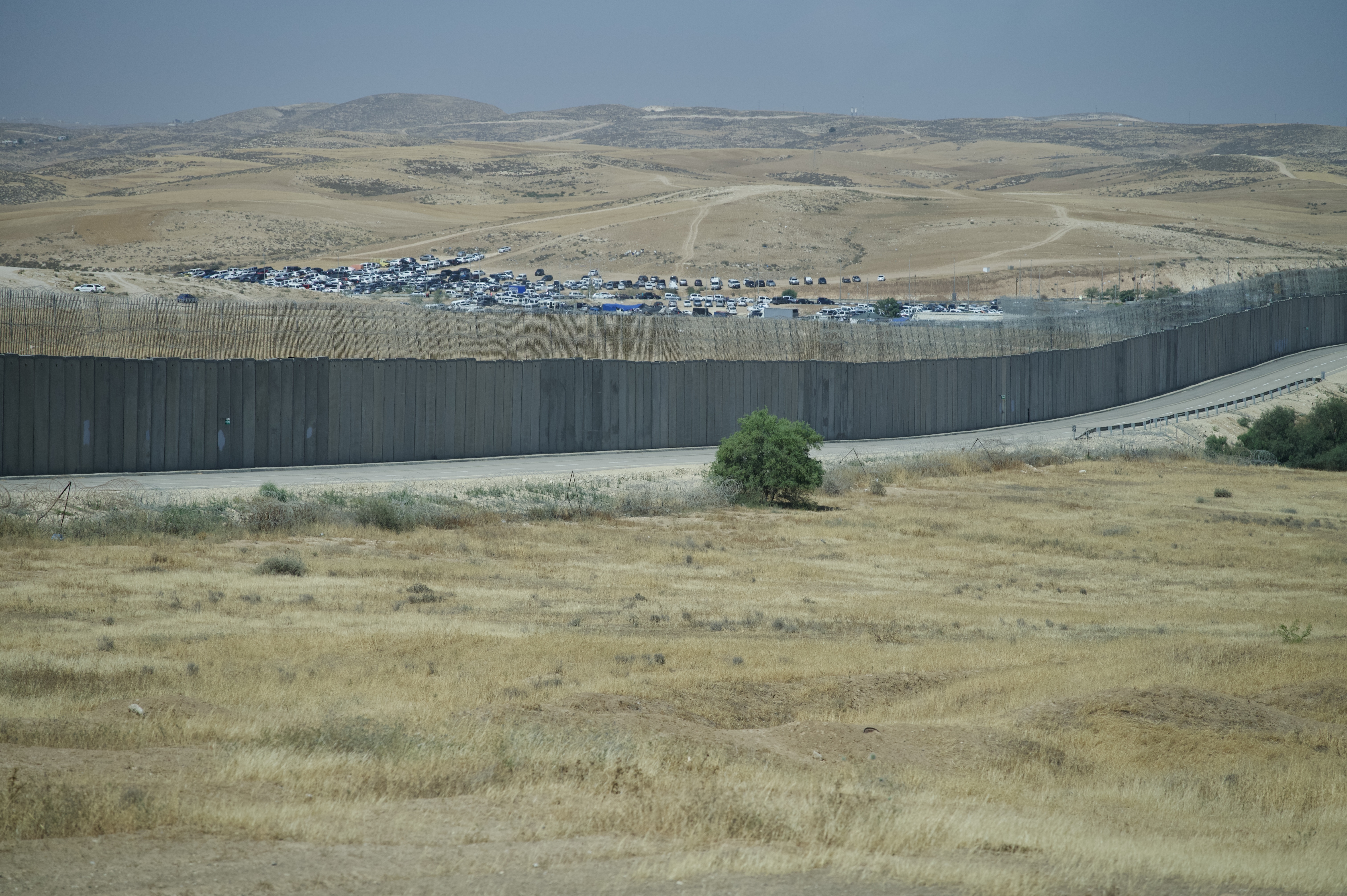
After we got on the correct road, we could clearly see the wall separating Israel from the West Bank.

Even though we were headed toward the Valley of Elah, this was also the route north to Jerusalem. The terrain kept changing the entire way. More and more trees and vegetation, and we kept climbing to higher elevations. We saw numerous herds of sheep along the way.
Valley of Elah
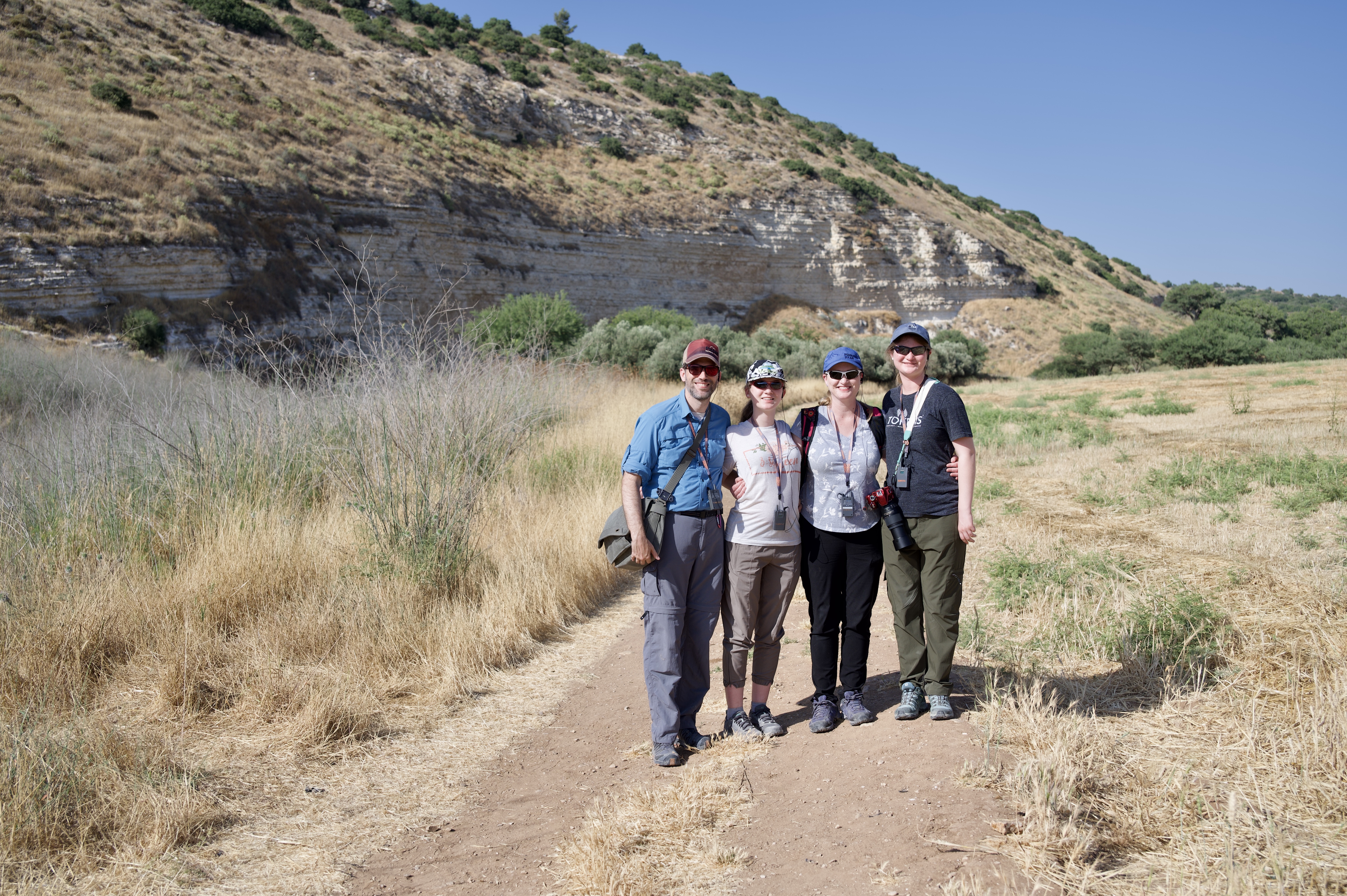
The bus eventually pulled off on the side of the road and we walked across a field to the Valley of Elah. The Valley of Elah is the modern Wadi es-Sant, and is the location where David killed Goliath in 1 Samuel 17 (Also mentioned in 21:9 in connection with the battle). It is home to several important archaeological sites, including those identified as the ancient towns of Azekah and Socho (1 Sam 17:1).

The Valley of Elah ran east to west between Israelite and Philistine territory, with Gath to the west, which made it a likely spot for a clash between the two powers. In 1 Samuel 17, the Israelite forces were probably on the hills on the north side of the valley, with the Philistines opposite them.

At the wadi, Ami talked to us a bit and then I read the account of David and Goliath in 1 Samuel 17.
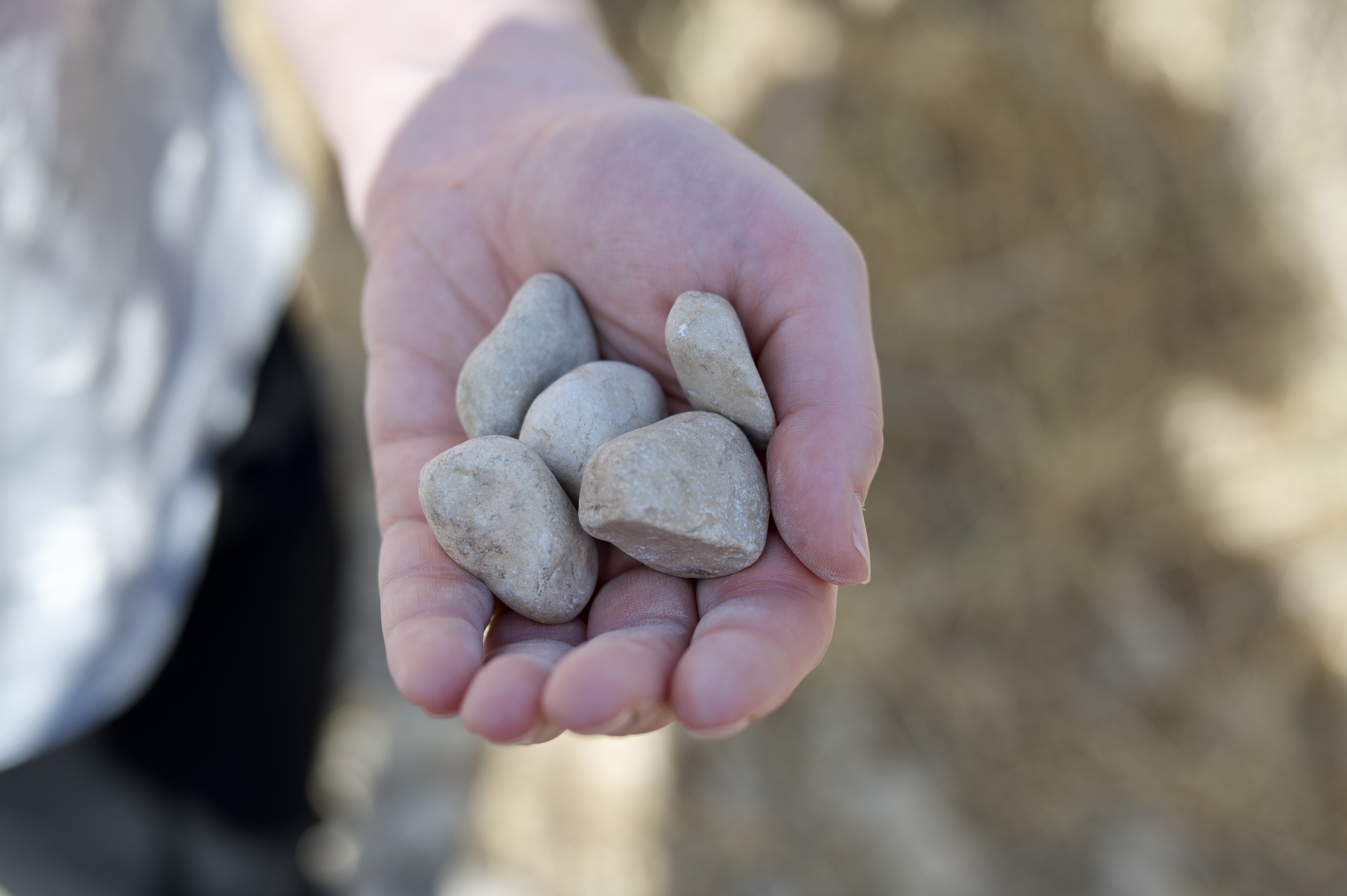
After this, we all selected five smooth stones from the wadi just like David did.

I enjoyed watching the girls select their stones.
The last time I was here it was almost dark, so it was nice to see it in the full daylight.

Back on the bus, we continued to climb toward Jerusalem. Derek led us in some hymns about Jerusalem and Zion, and I really enjoyed the singing.
Mount Scopus
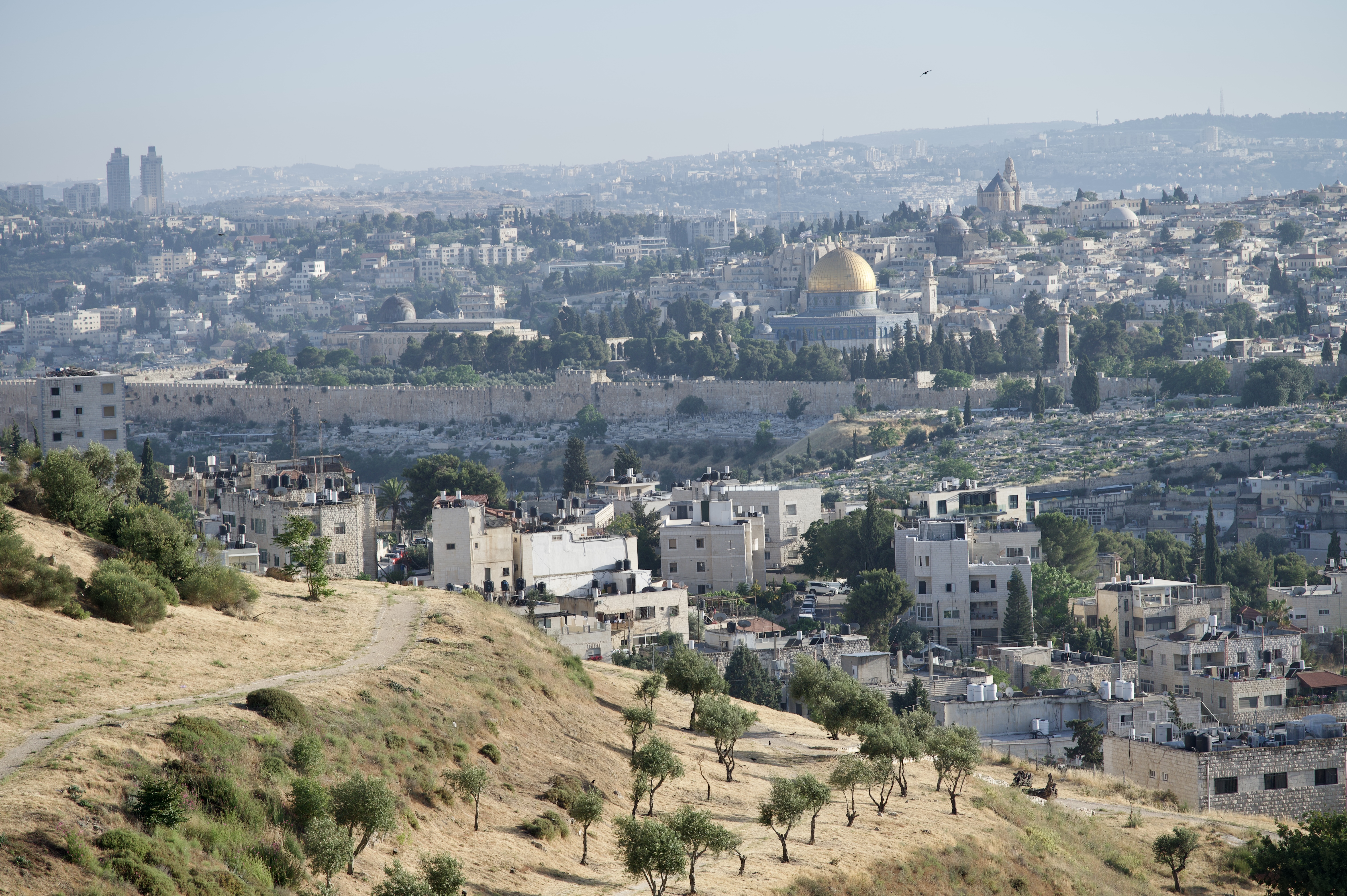
Once we entered Jerusalem, we stopped briefly at on overlook on Mount Scopus where we got our first glimpse of the Old City of Jerusalem.

Ami read from Psalm 122, which is one of the Psalms of Ascent and a blessing for Jerusalem.

After spending a few minutes there, we drove to the Olive Tree hotel and checked in. Dinner tonight was very nice as we spent some time in wonderful conversation with Daniel and Jana Palk. I’ve really enjoyed getting to know them more on this trip. They are a wonderful couple. I’m now looking forward to a good night’s sleep and a busy day in Jerusalem tomorrow.
